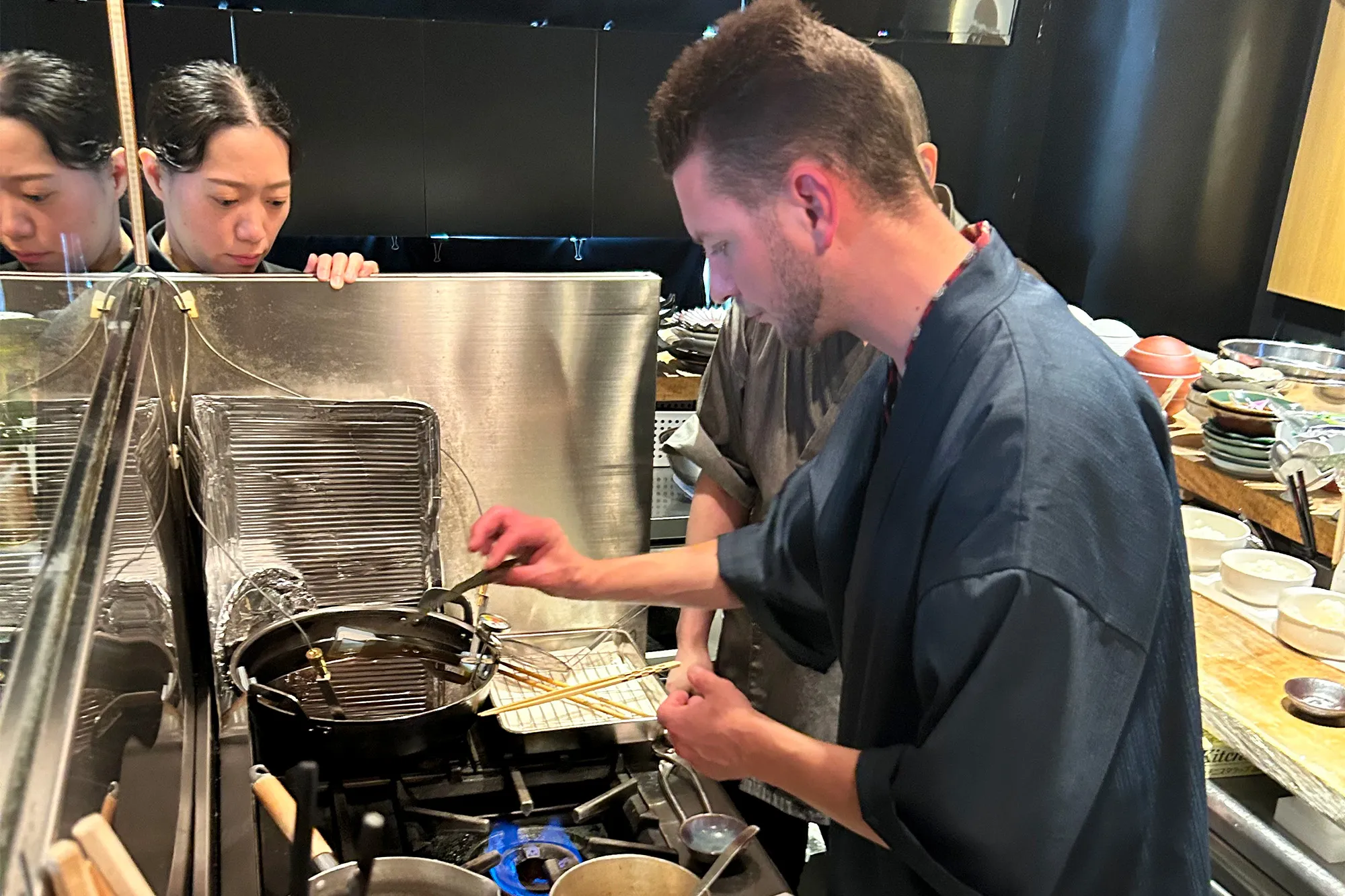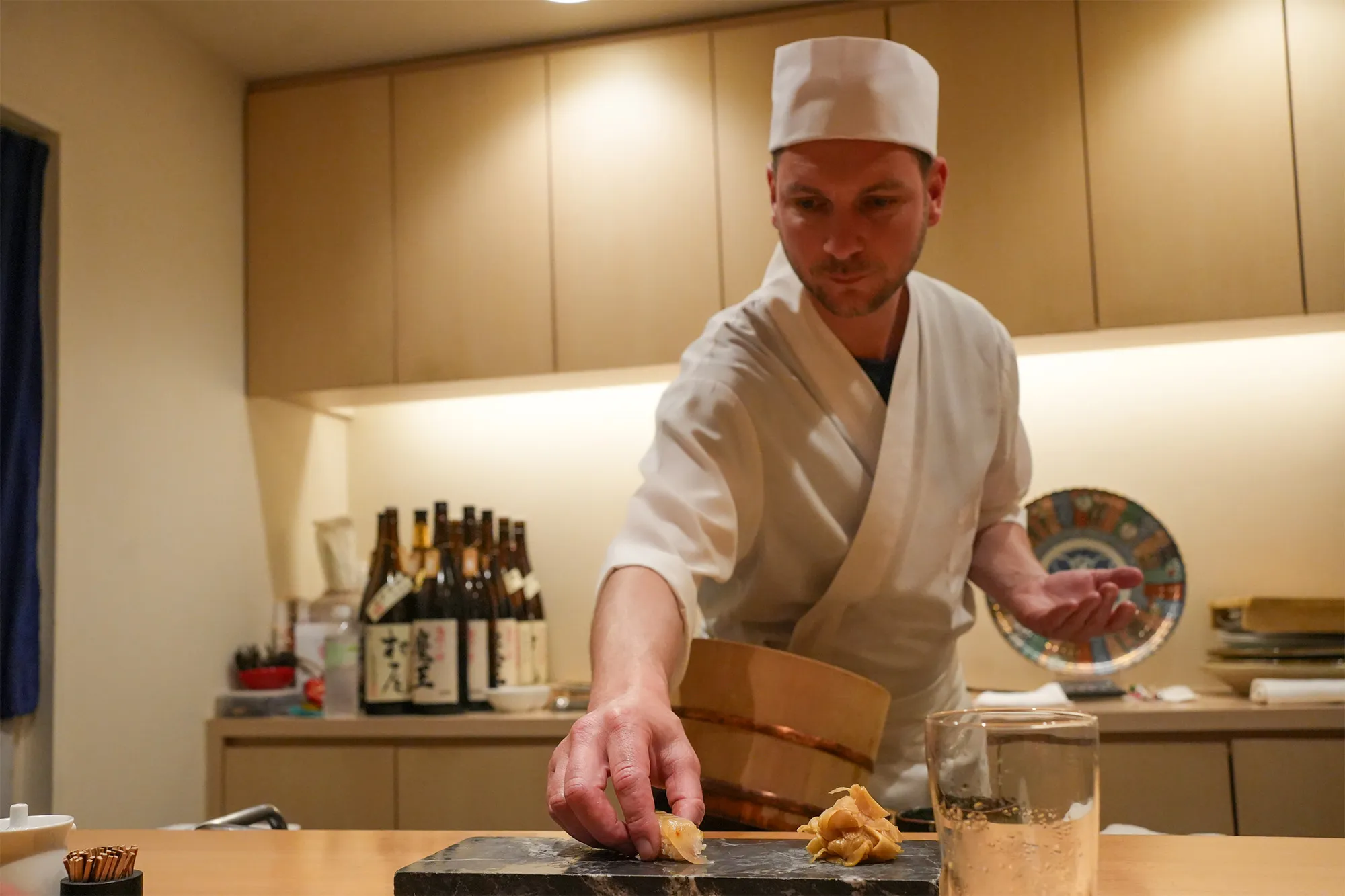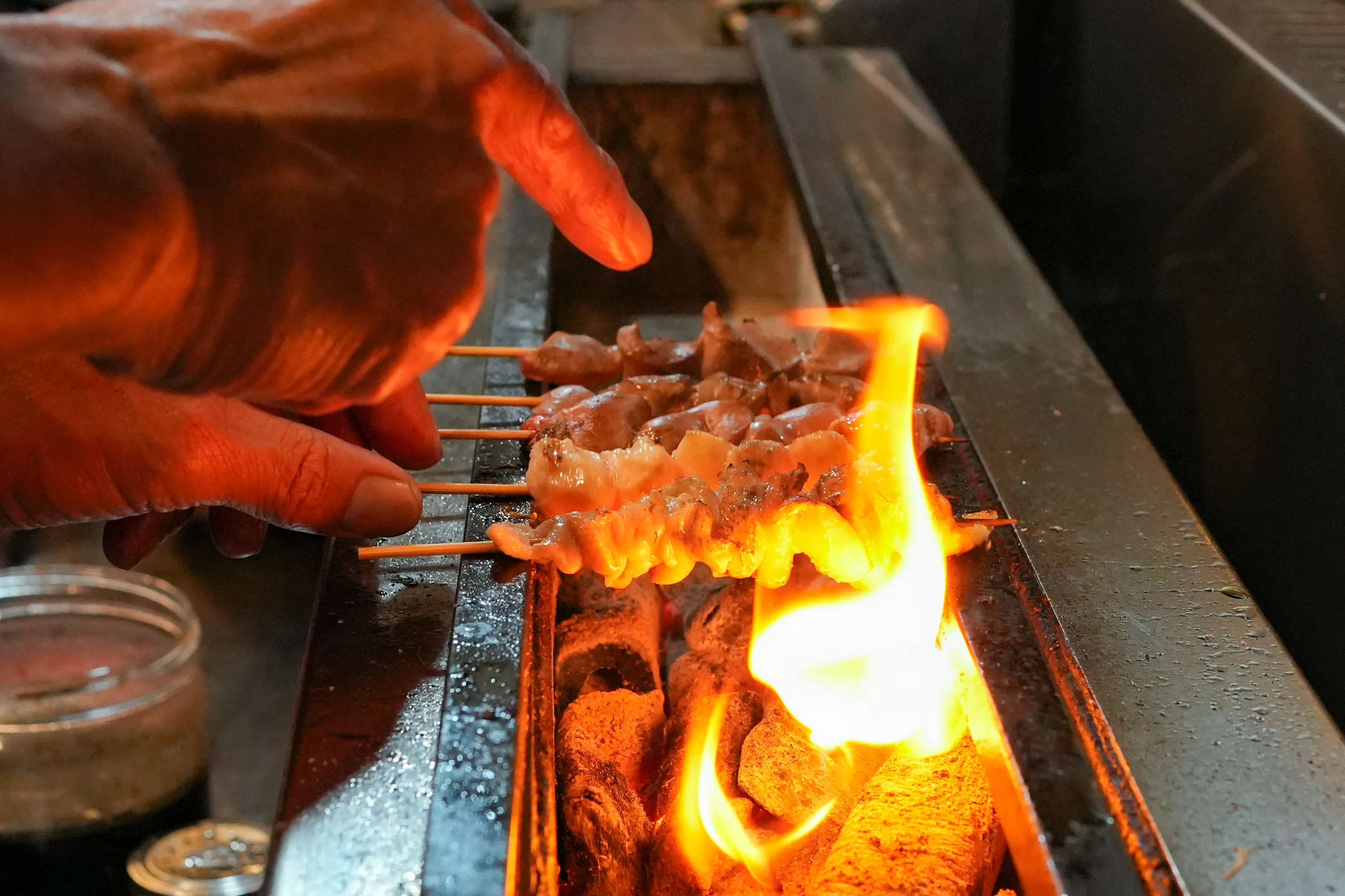Lesson Report: Three-Week Course(Part 3 1-Week Izakaya Course)
May 13, 2024
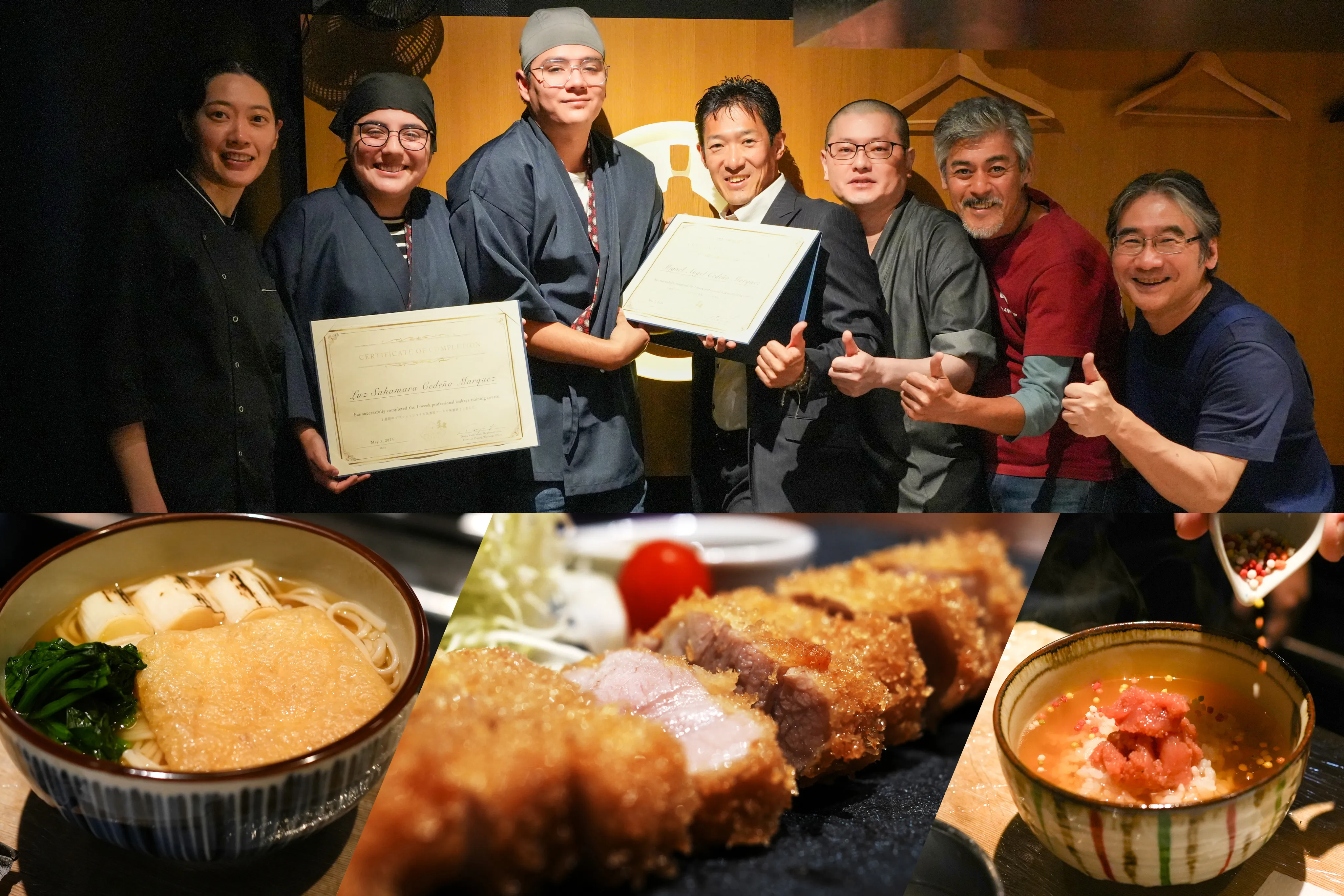
This article highlights the 1-Week Izakaya Course, which Sam and Miguel take in the third week of the 3-Week Course.
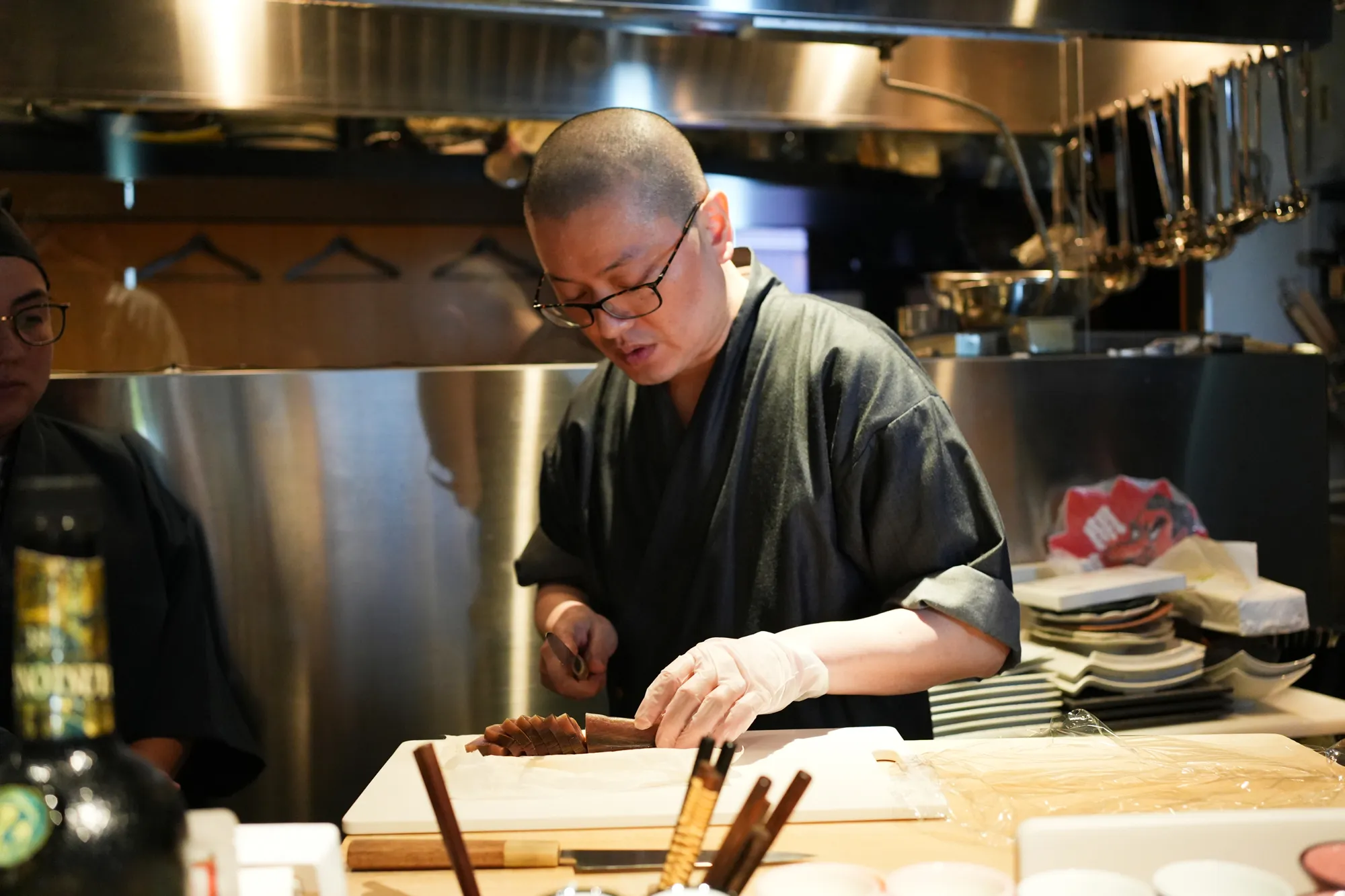
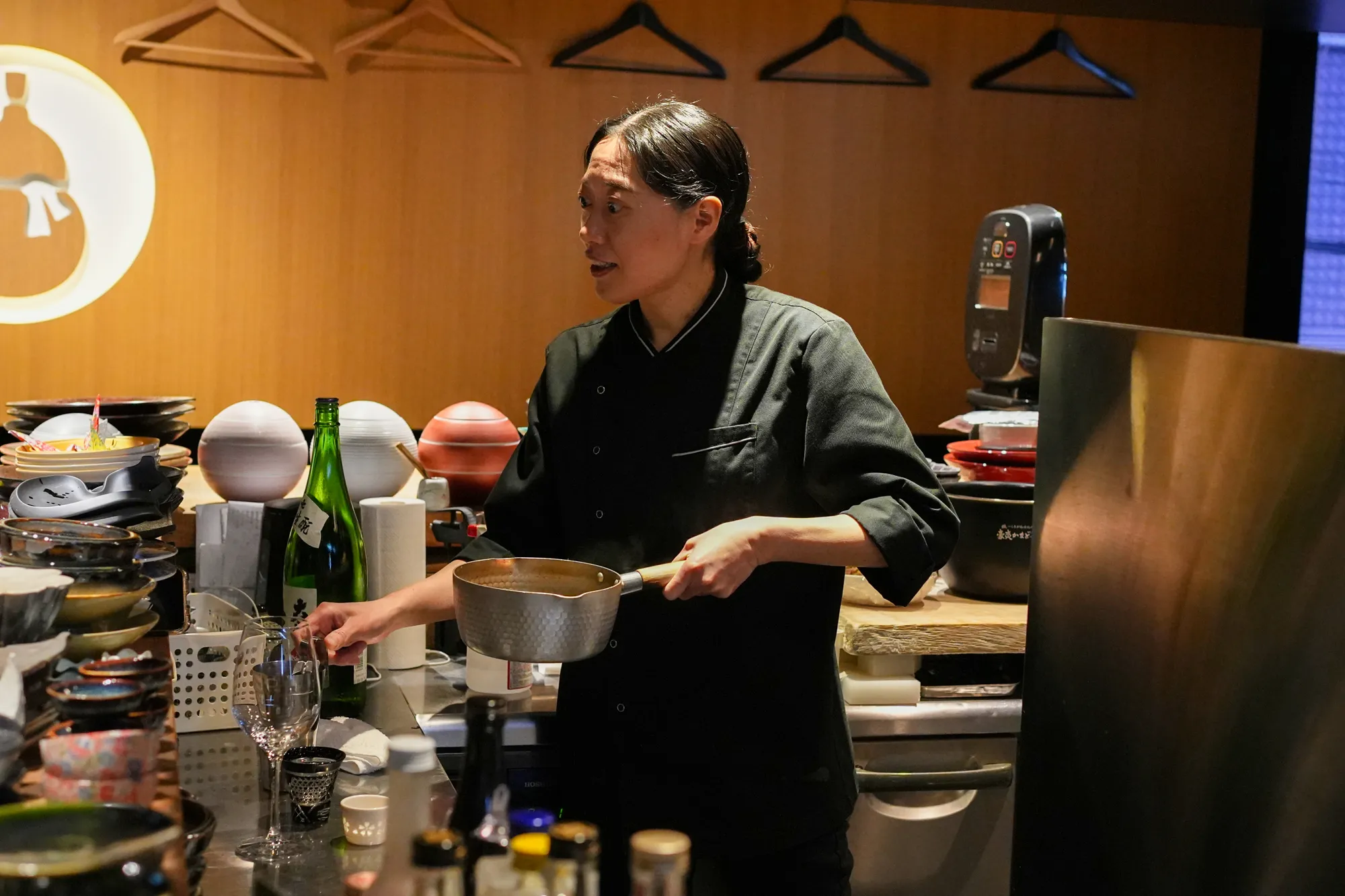
Our school boasts two instructors in this course. One is Kazushi Matsumaru, a true-born Washoku artisan with over two decades of experience. He garners admiration and applause from celebrities across various fields due to his extensive knowledge and superb culinary skills. Additionally, he has several years of valuable experience distributing fish to well-known restaurants. The other instructor is Yuki Miyawaki, a seasoned wine sommelier with over 8 years of experience. While her proficiency in wine is unquestionable, what truly sets her apart is her unparalleled mastery of sake. Yuki passed the challenging Sake Diploma exam, known for its formidable difficulty, and today she specializes in the delicate art of sake food pairing as an integral part of her role at the restaurant.
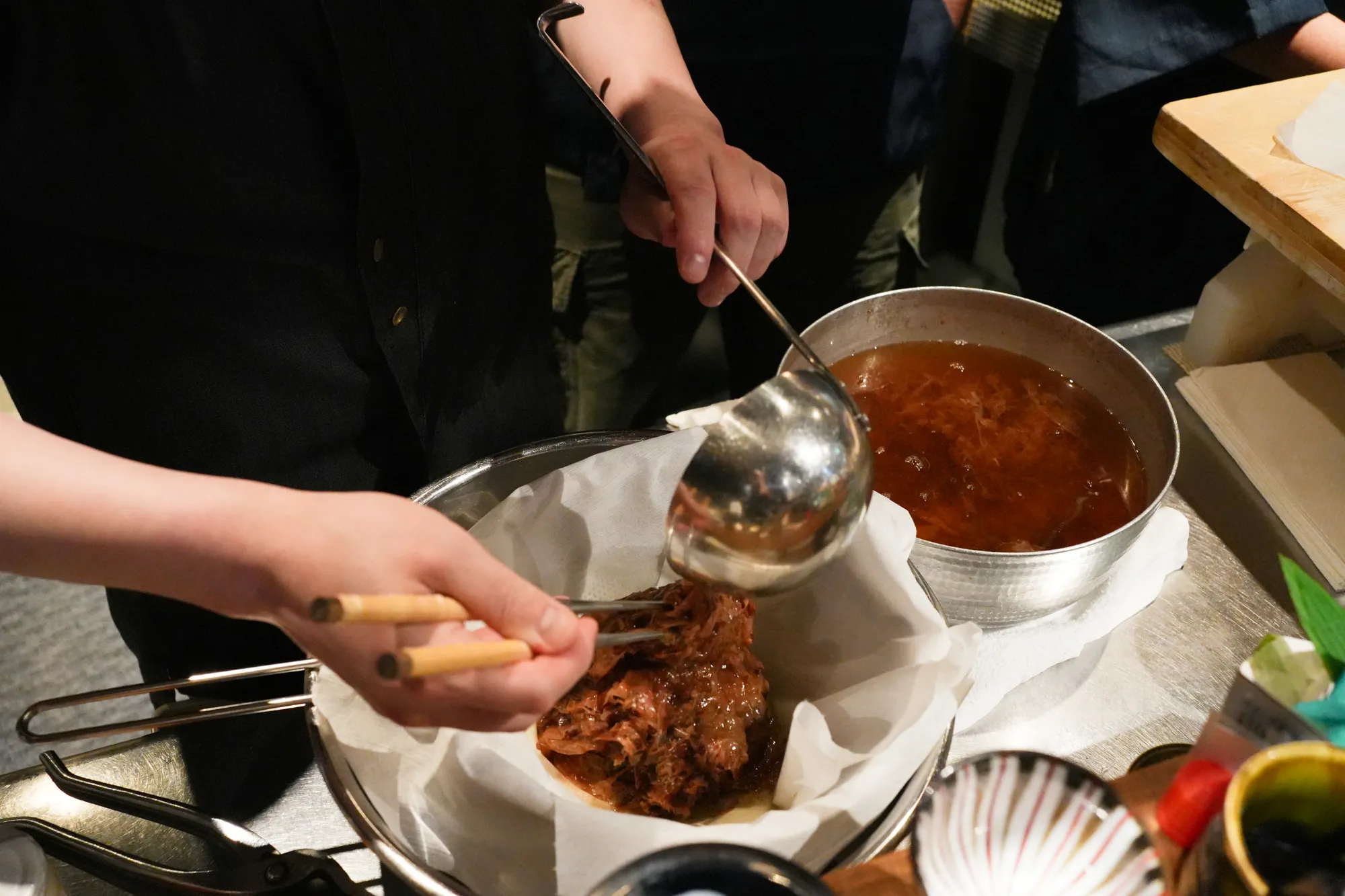
On Day 1, Sam and Miguel learn the traditional way of preparing ‘dashi’ stock from kelp and dried bonito, which is the essence of Japanese cuisine. They also learn about ‘umami’ through the preparation of ‘dashi.‘
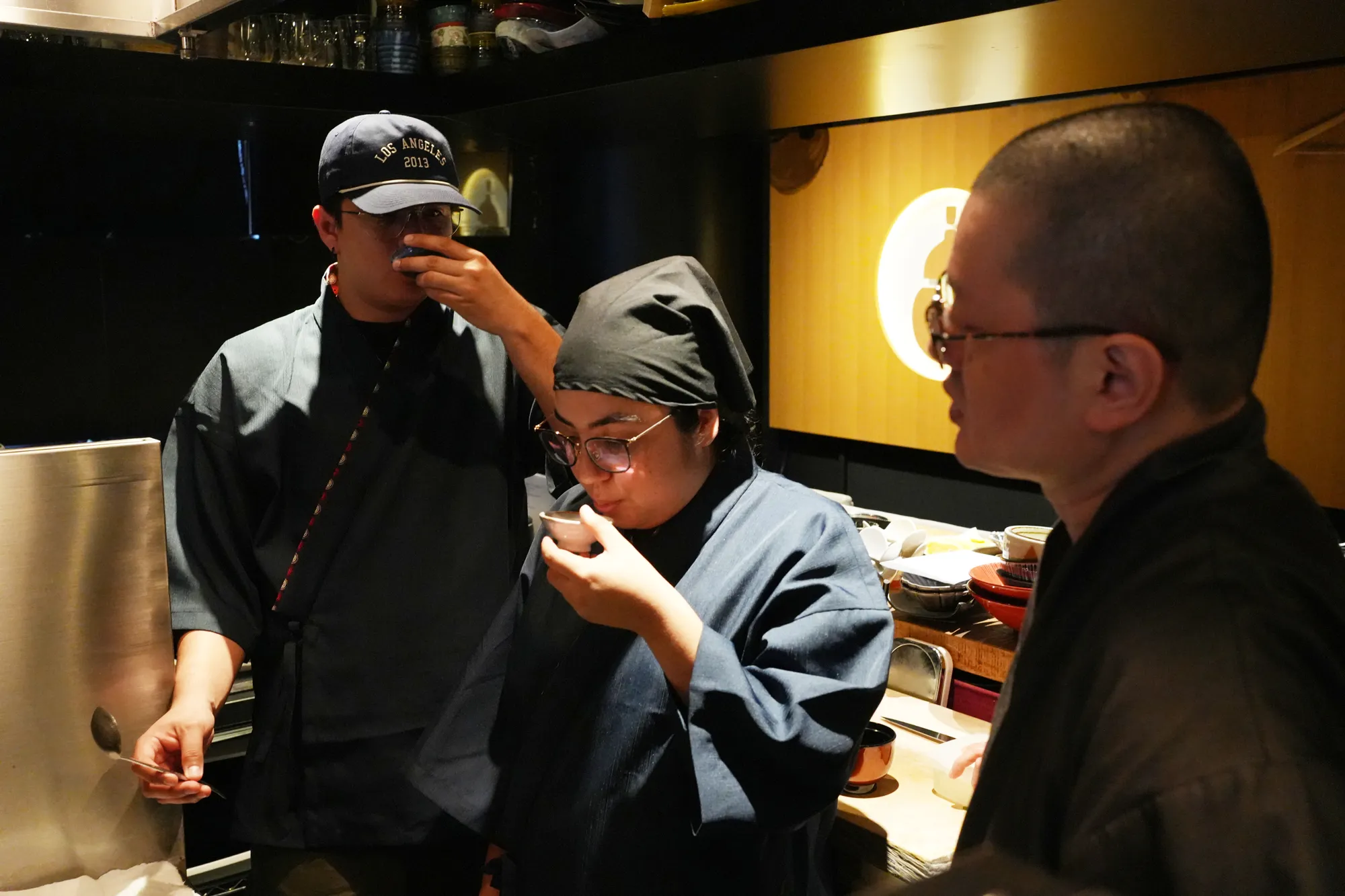
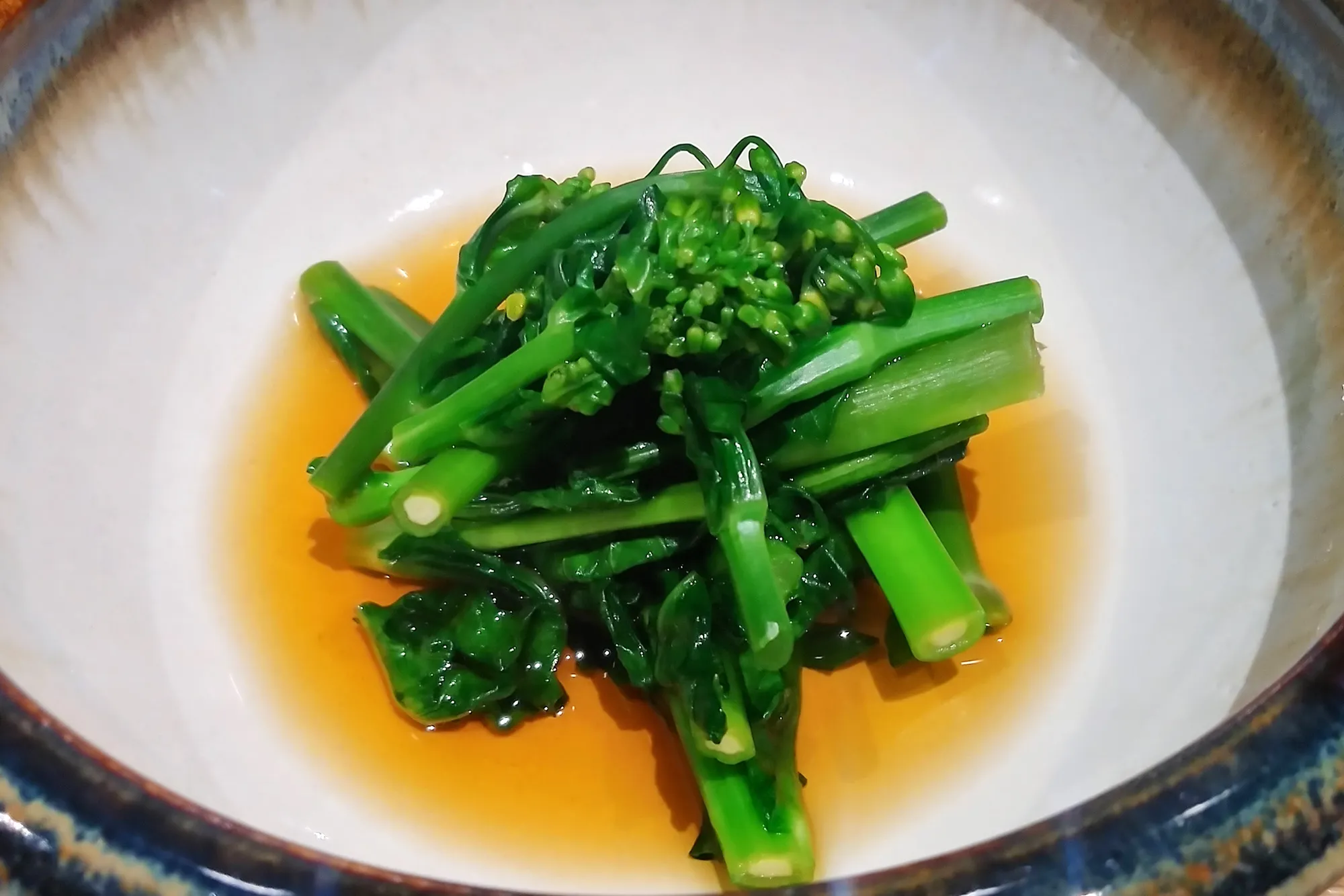
Next, they learn some dishes they can make using ‘dashi.’ For instance, miso soup with white miso and reddish-brown miso, Japanese-style rolled omelet flavored with ‘dashi,’ ohitashi (boiled greens with soy sauce dressing), and so on.
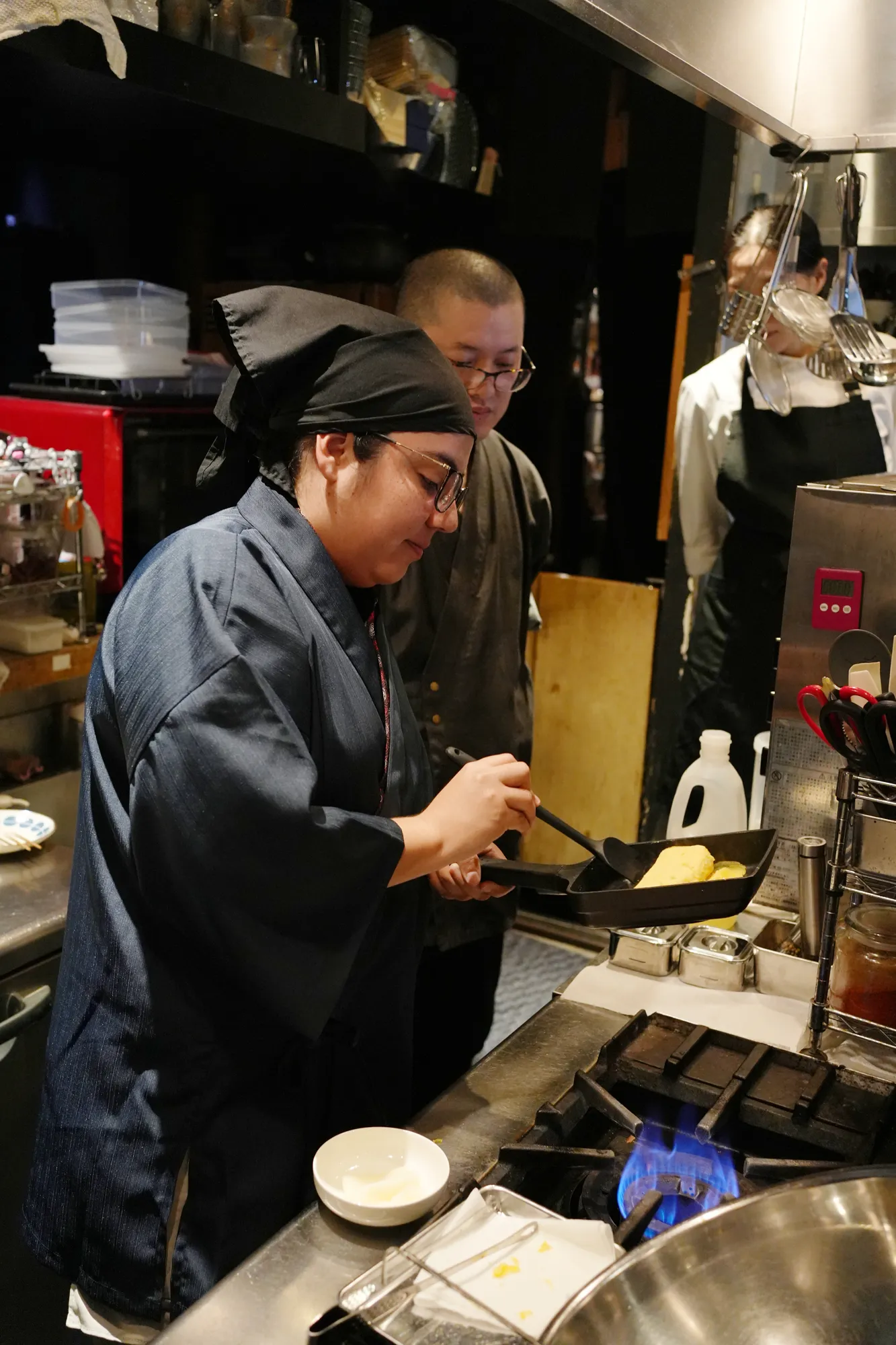
Sam and Miguel practice making Japanese-style rolled omelets again, although they struggled with them in the Sushi Course. They use a lighter frying pan to make the rolled omelets. They are getting better, but still have difficulty rolling the thin layers of the egg to stack them on top of each other.
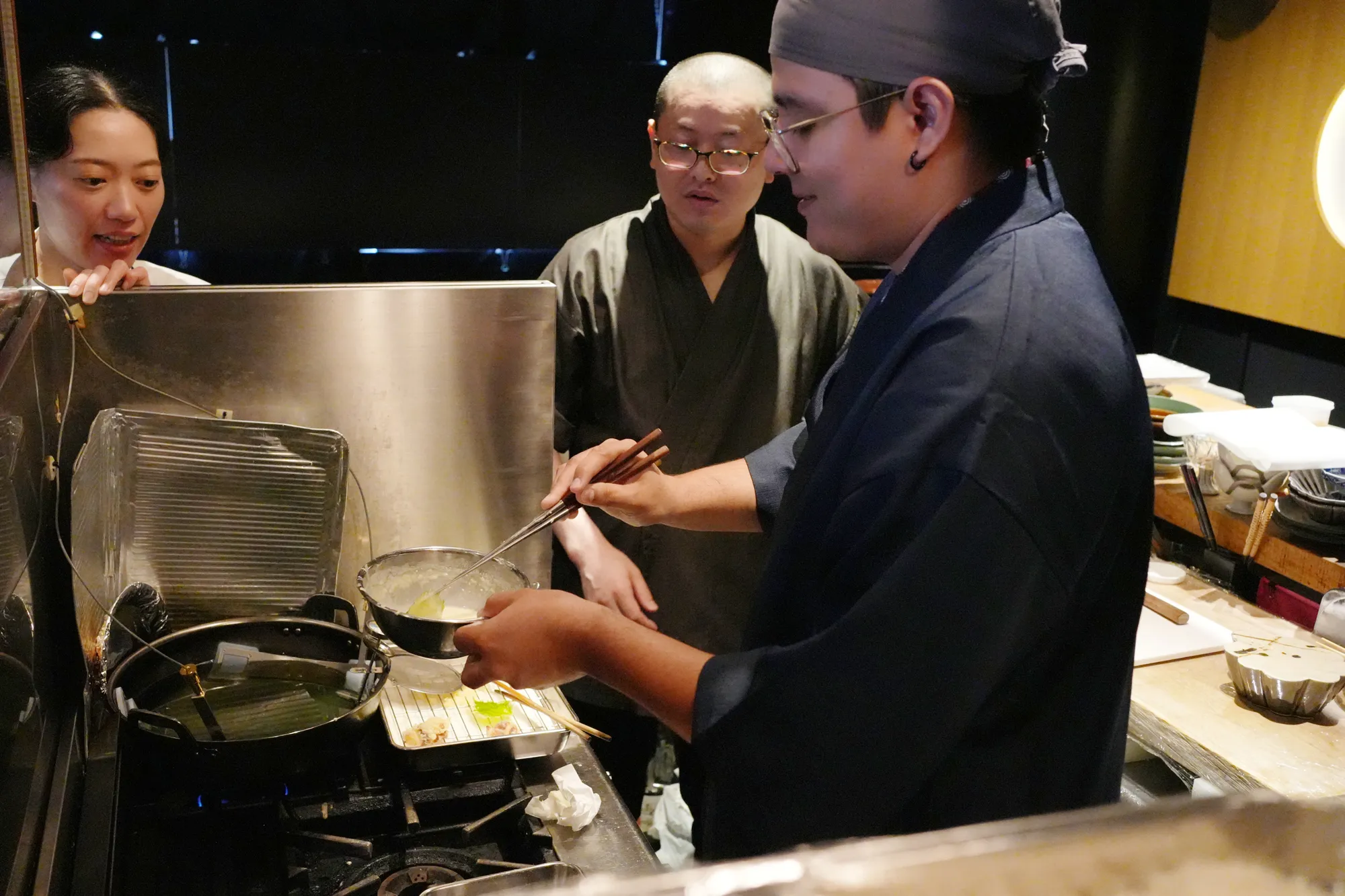
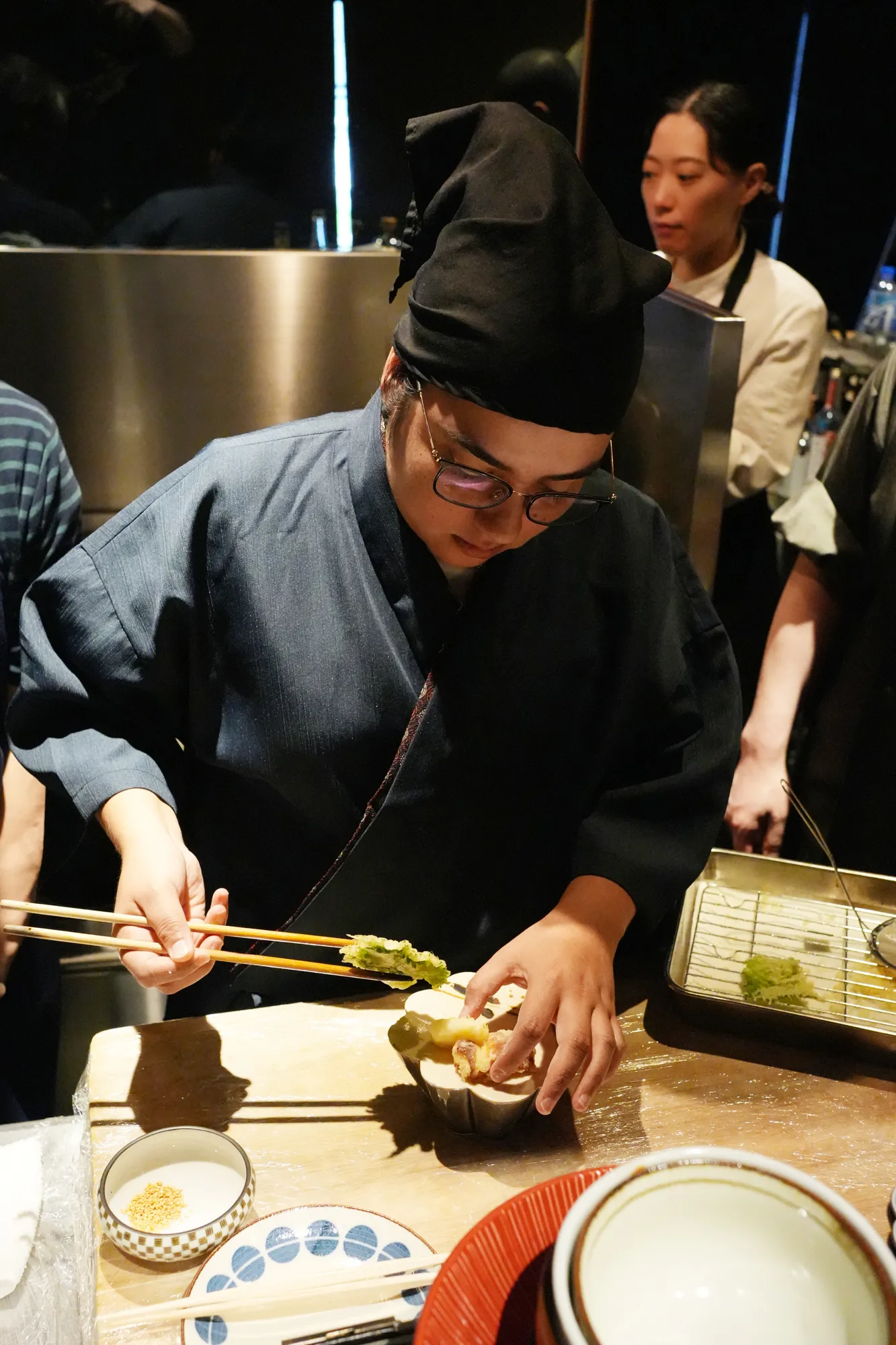
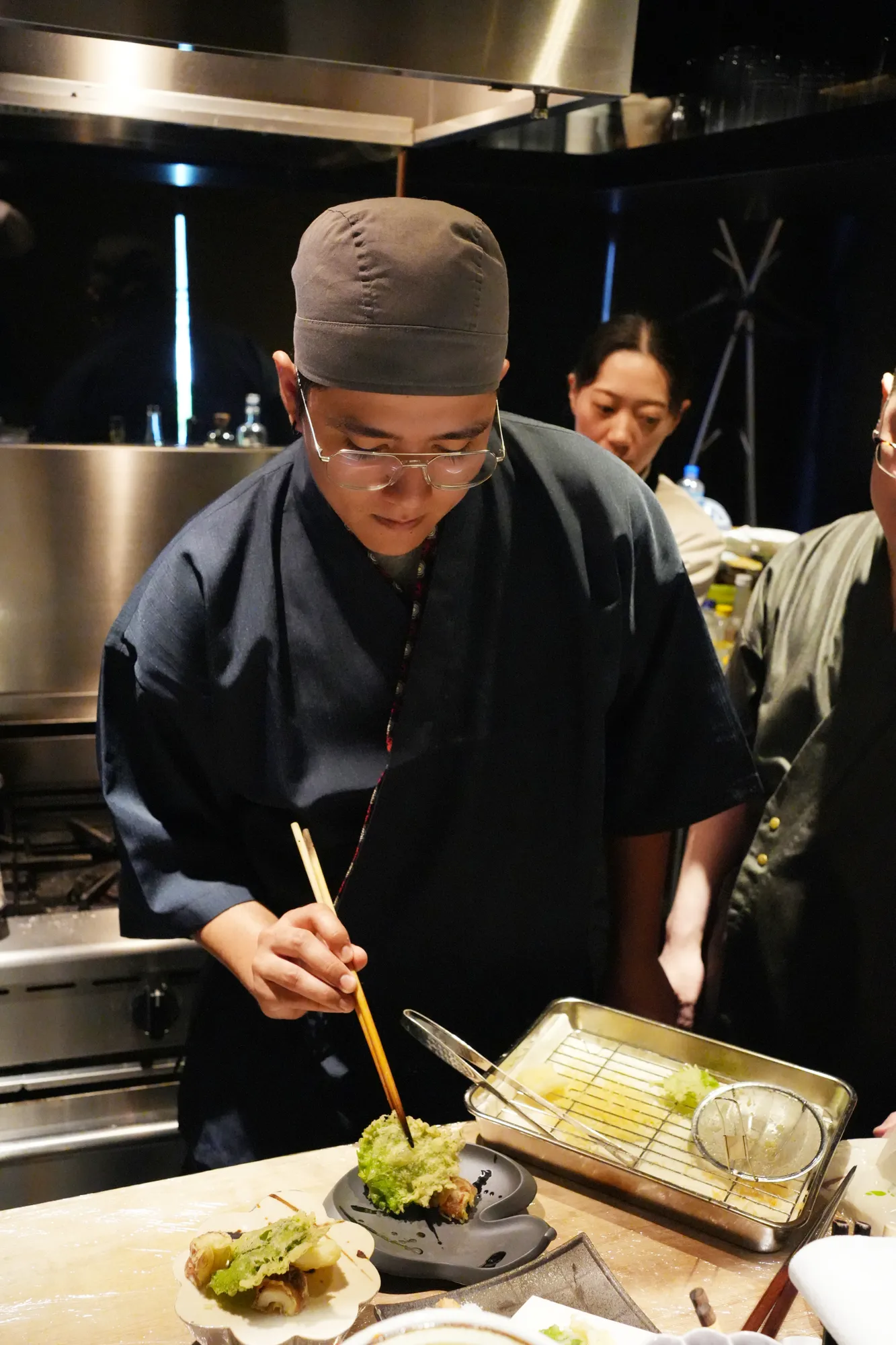
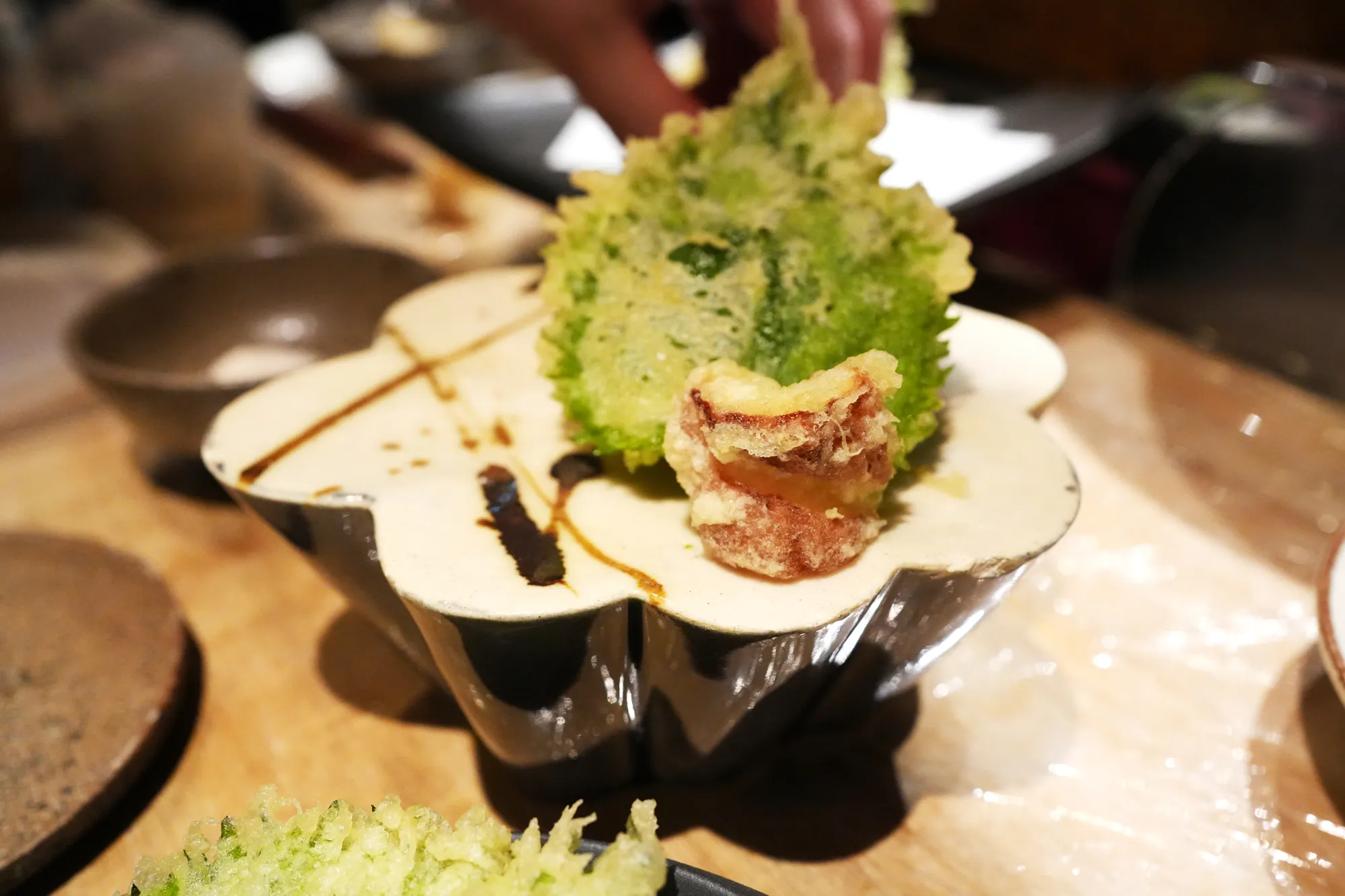
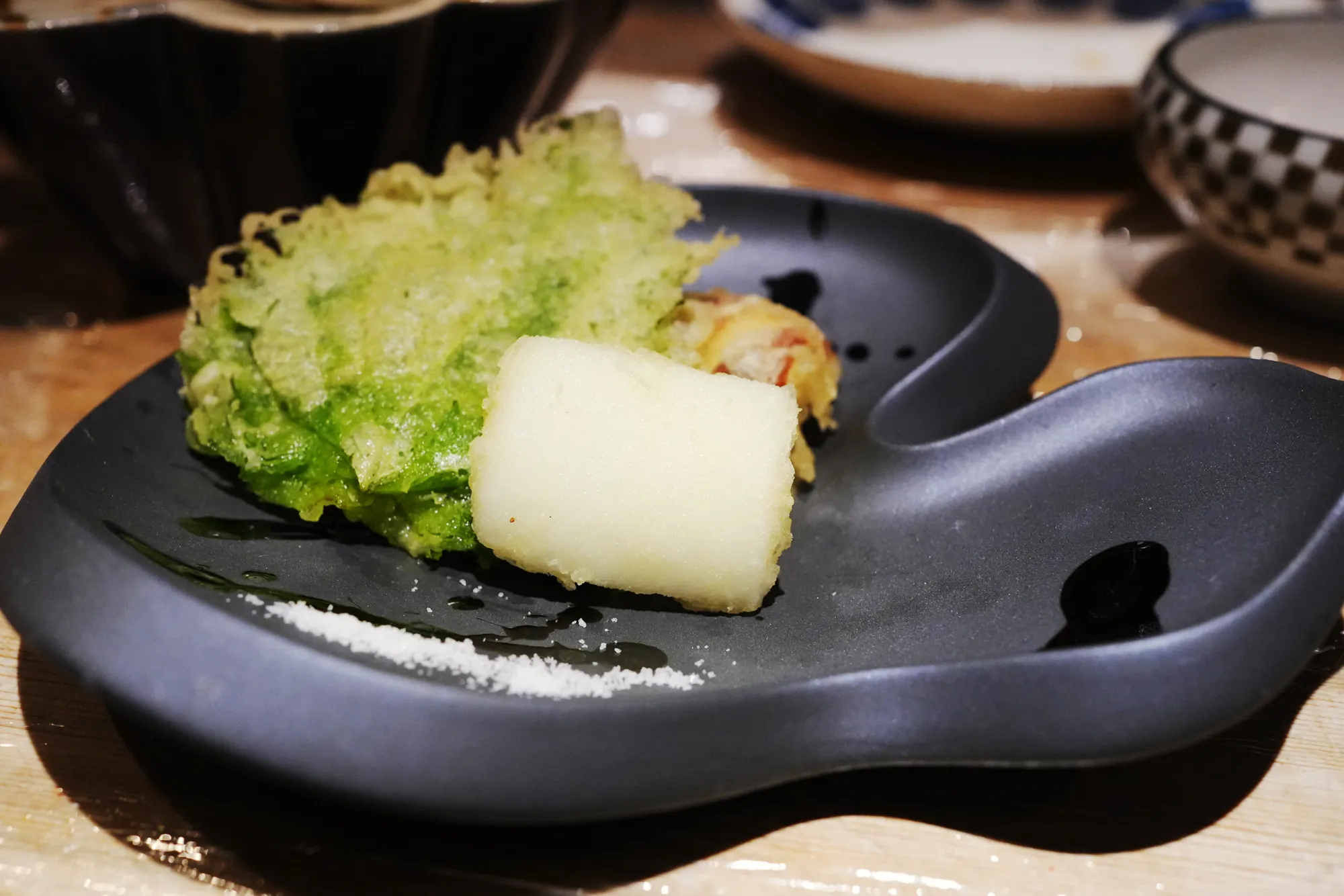
Day 2 focuses on deep-fried dishes such as tempura and ‘tonkatsu’ (deep-fried breaded pork cutlet). They receive instructions from Instructor Matsumaru on some secrets to achieving the perfect crunchiness in tempura. Additionally, they are instructed to choose their favorite plates to serve tempura on, and then they learn the effective way to arrange tempura on the plate to enhance their presentation. Plate presentation is a very important element of traditional Japanese cuisine.
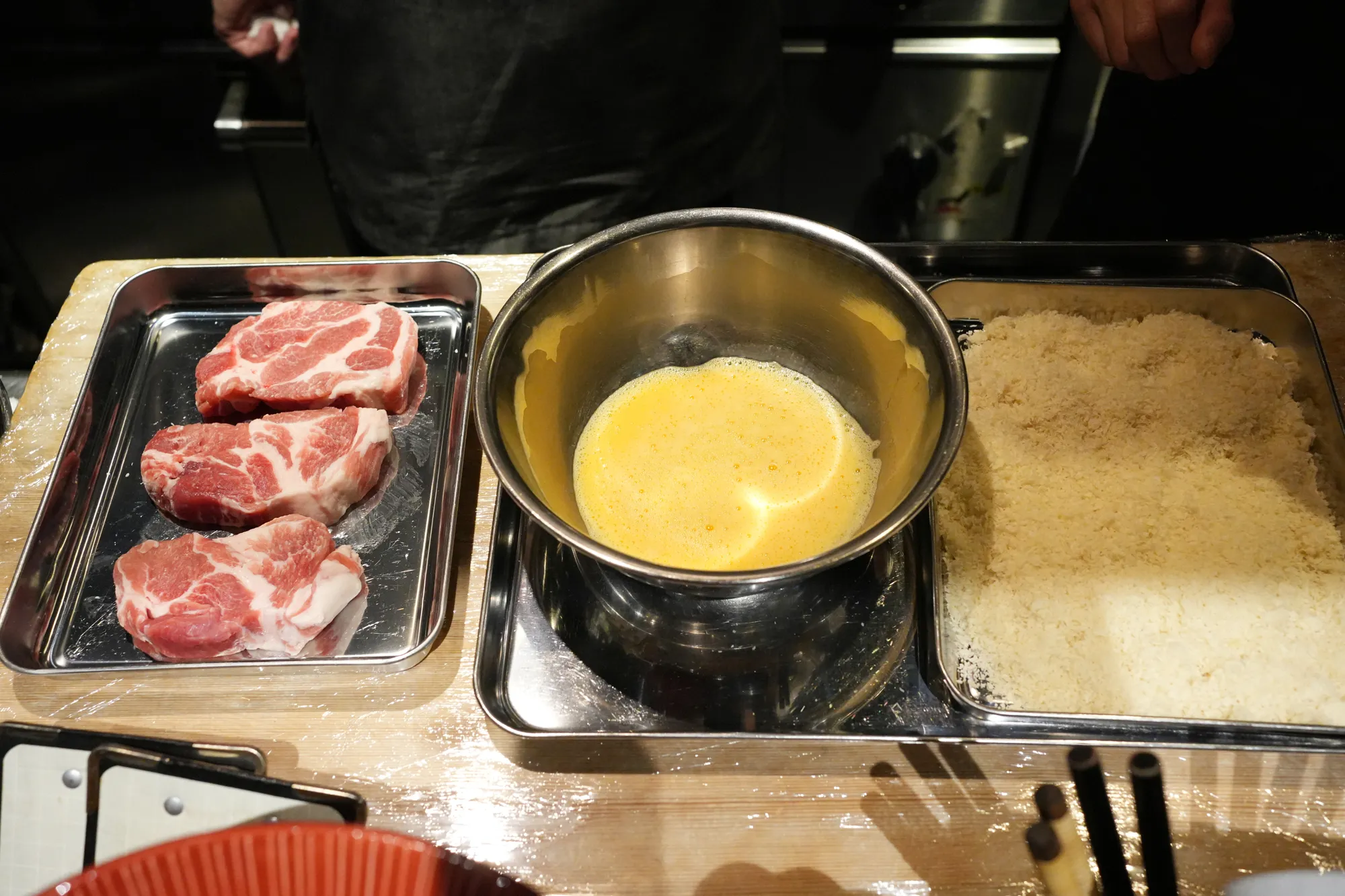
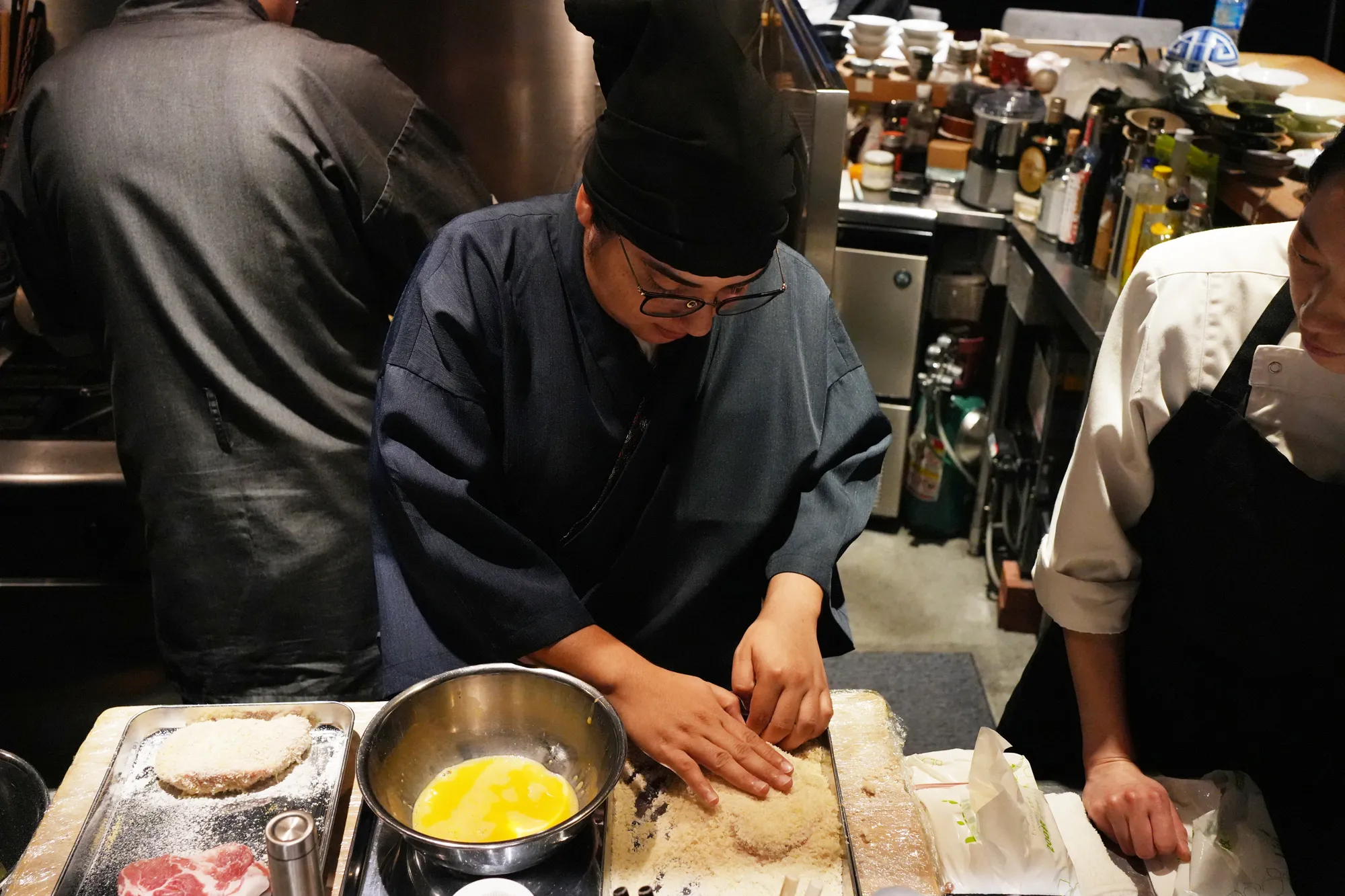
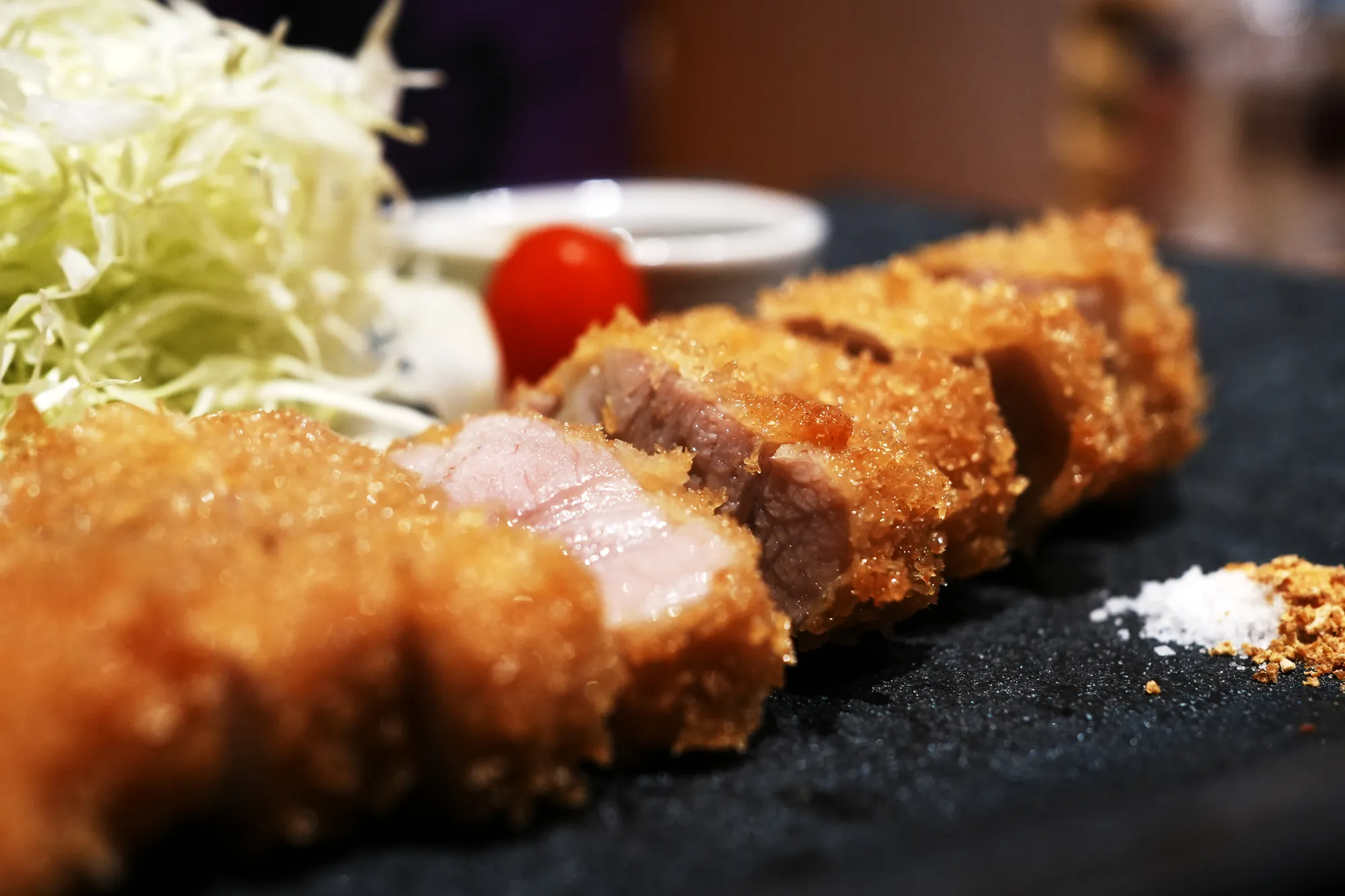
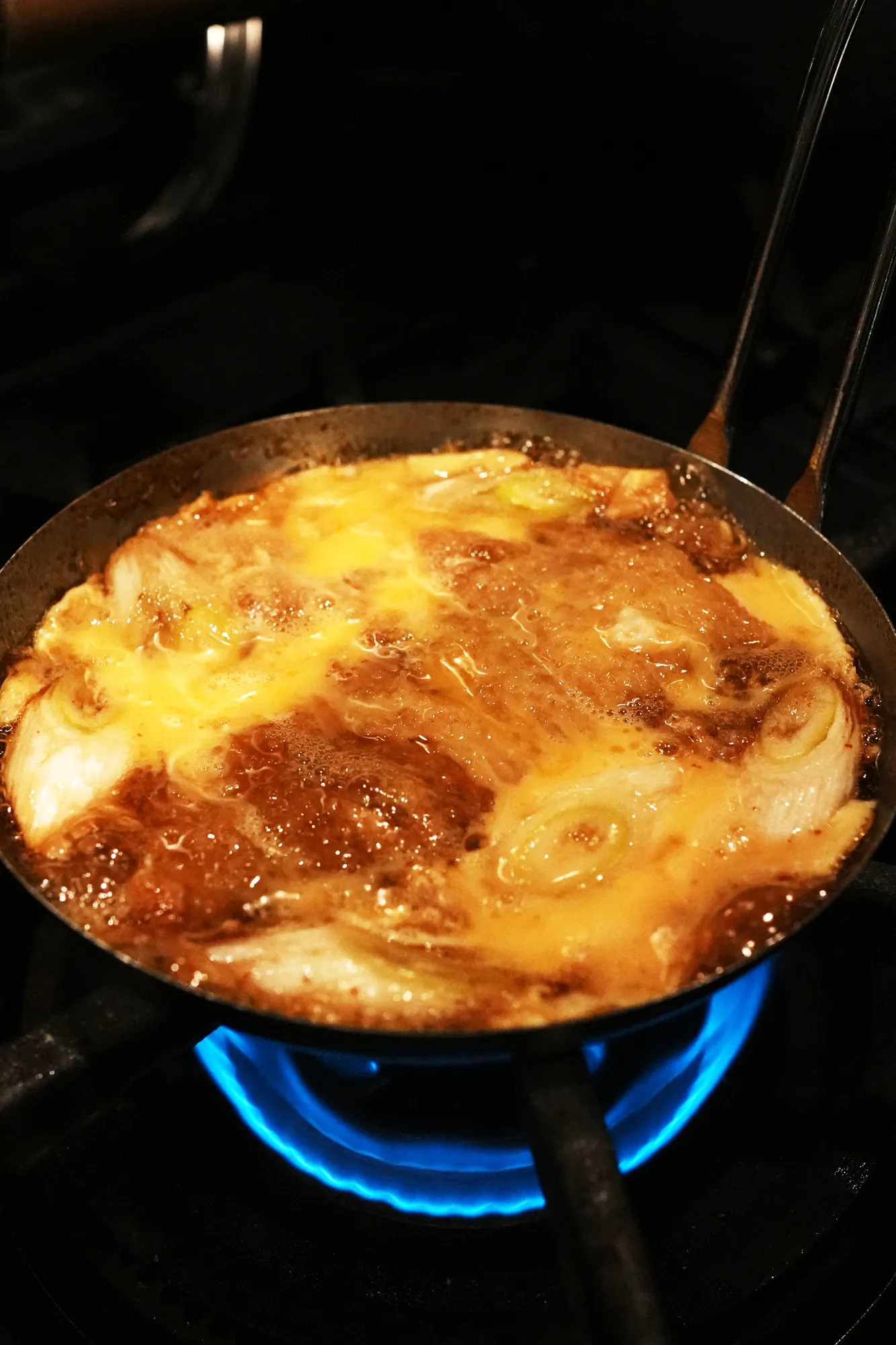
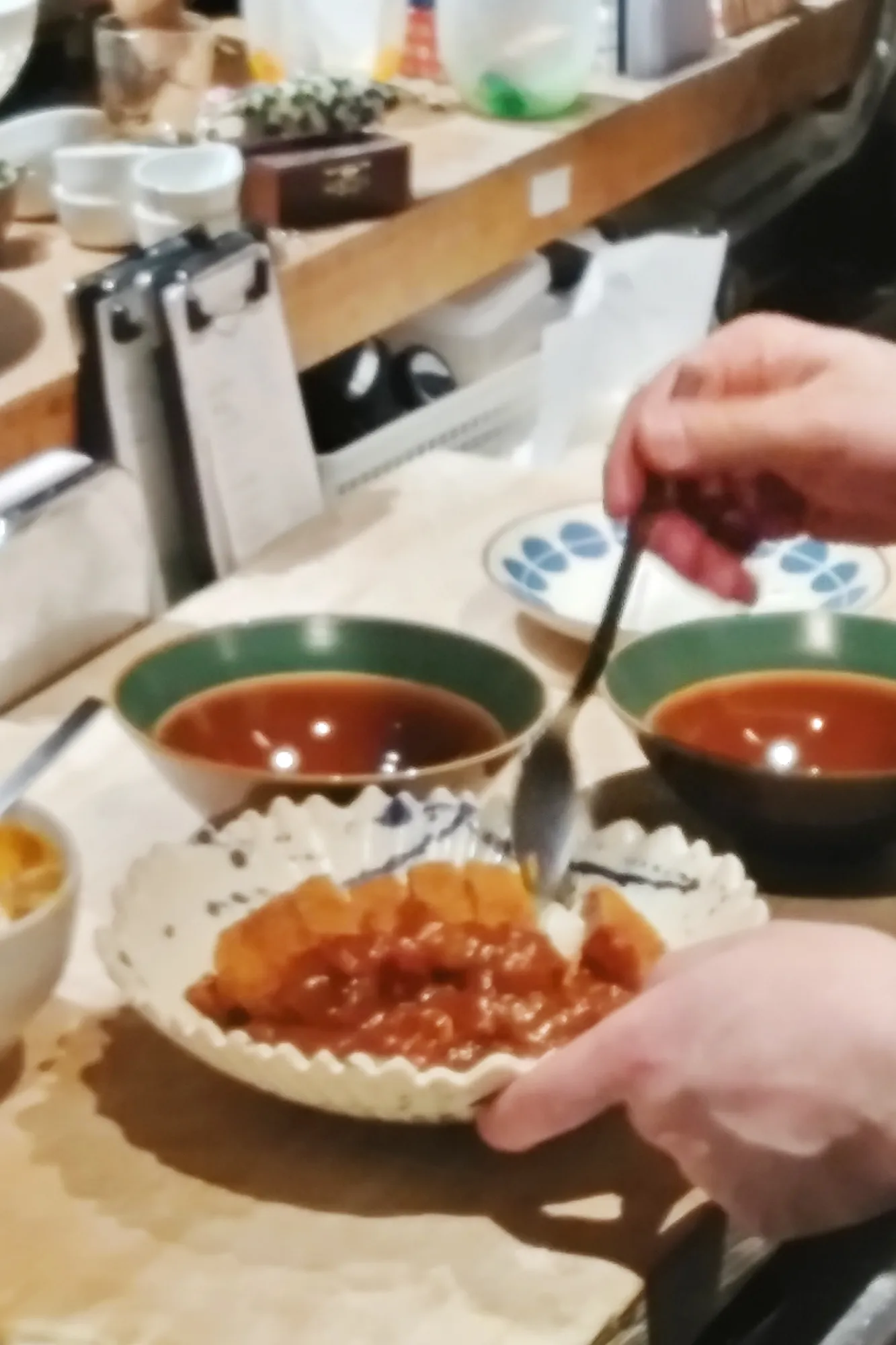
‘Tonkatsu’ is one of the most beloved deep-fried dishes by people from abroad as well as by the Japanese. They practice preparing pork cutlets and deep-frying them under the guidance of the Instructor Matsumaru, aiming for a crispy exterior and juicy interior. Then they learn two other major Japanese dishes using ‘tonkatsu’: ‘Katsudon’ and ‘Katsu curry and rice.’ They anticipate that these foods will also gain popularity in Mexico.
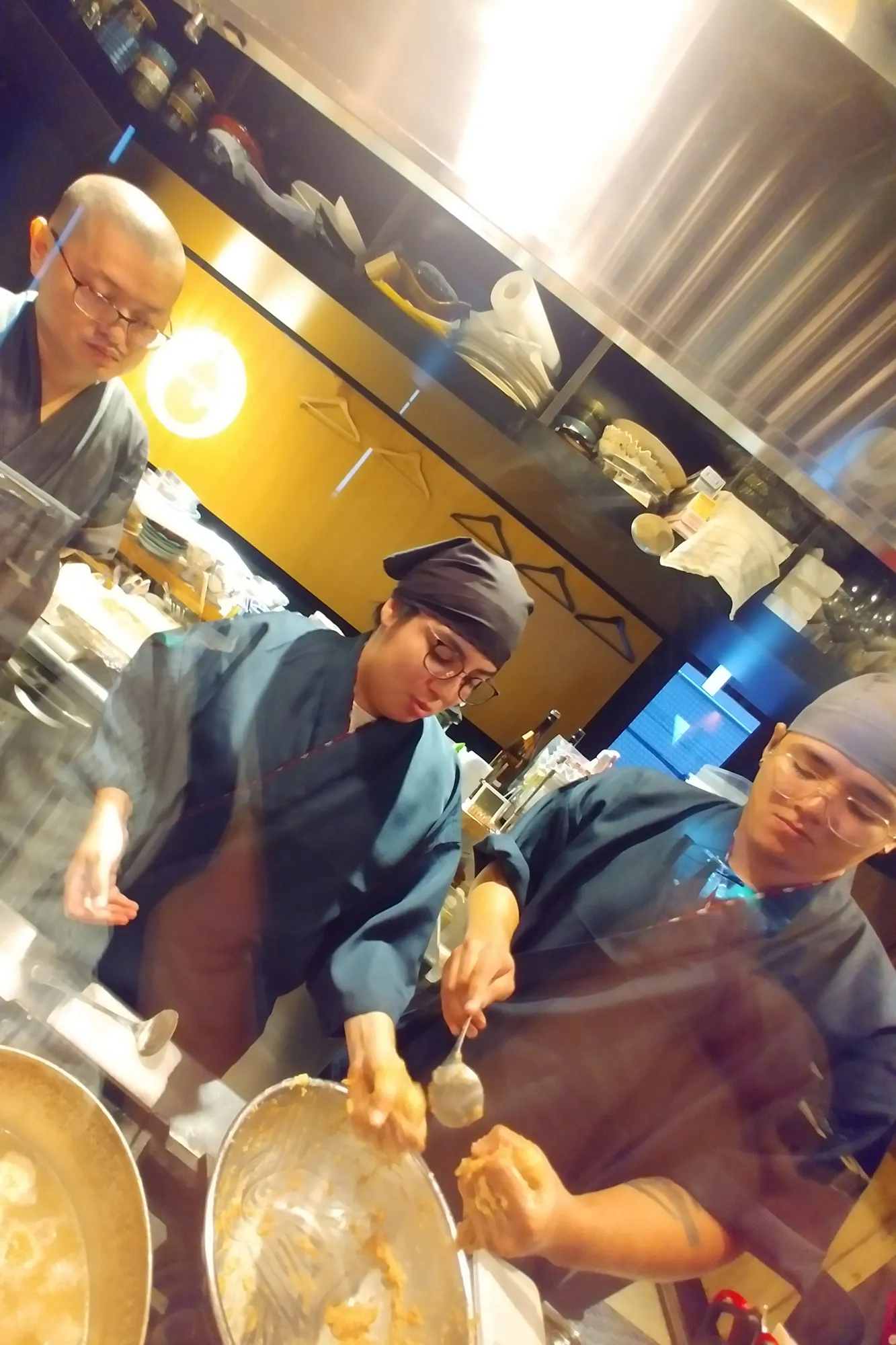
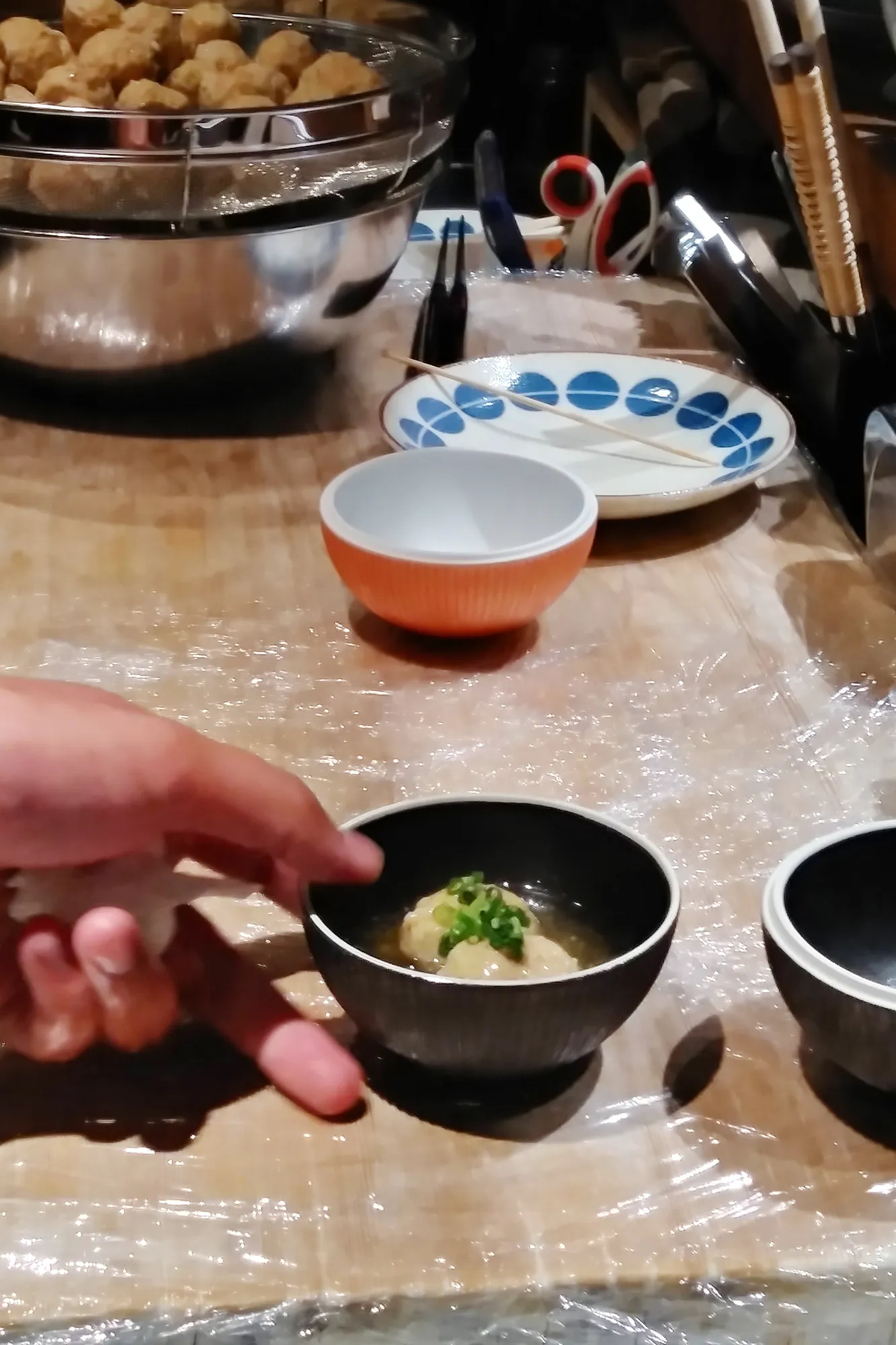
The main topics of Day 3 are grilled dishes and ‘sashimi’ (slices of raw fish). To begin with, they practice making ‘tsukune’ (chicken meatballs), which can be used in a variety of ways, such as grilling or simmering in ‘dashi’ and seasonings. It is difficult to make chicken meatballs perfectly round shaped, but after practicing dozens of pieces, they finally made it!
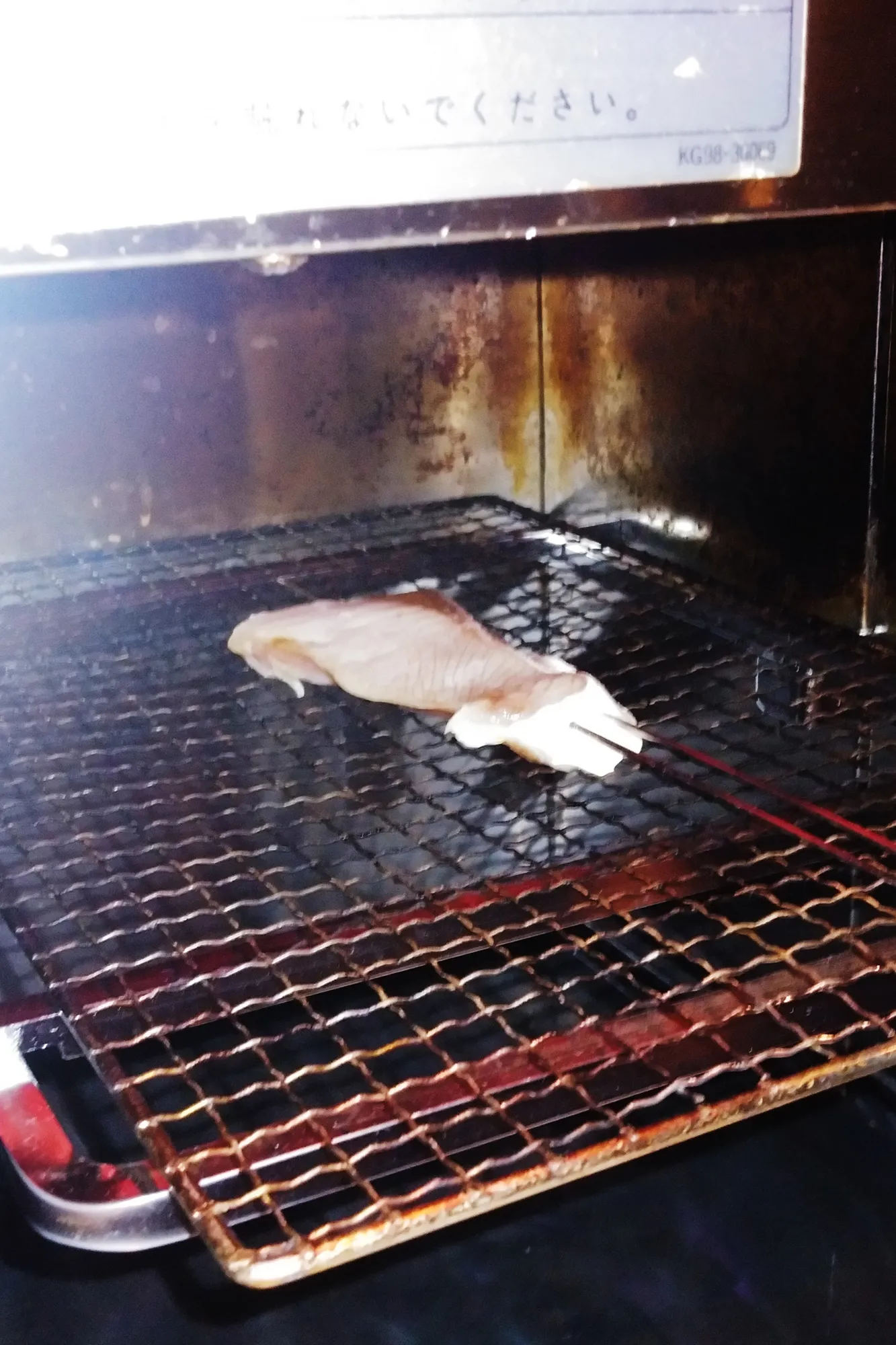
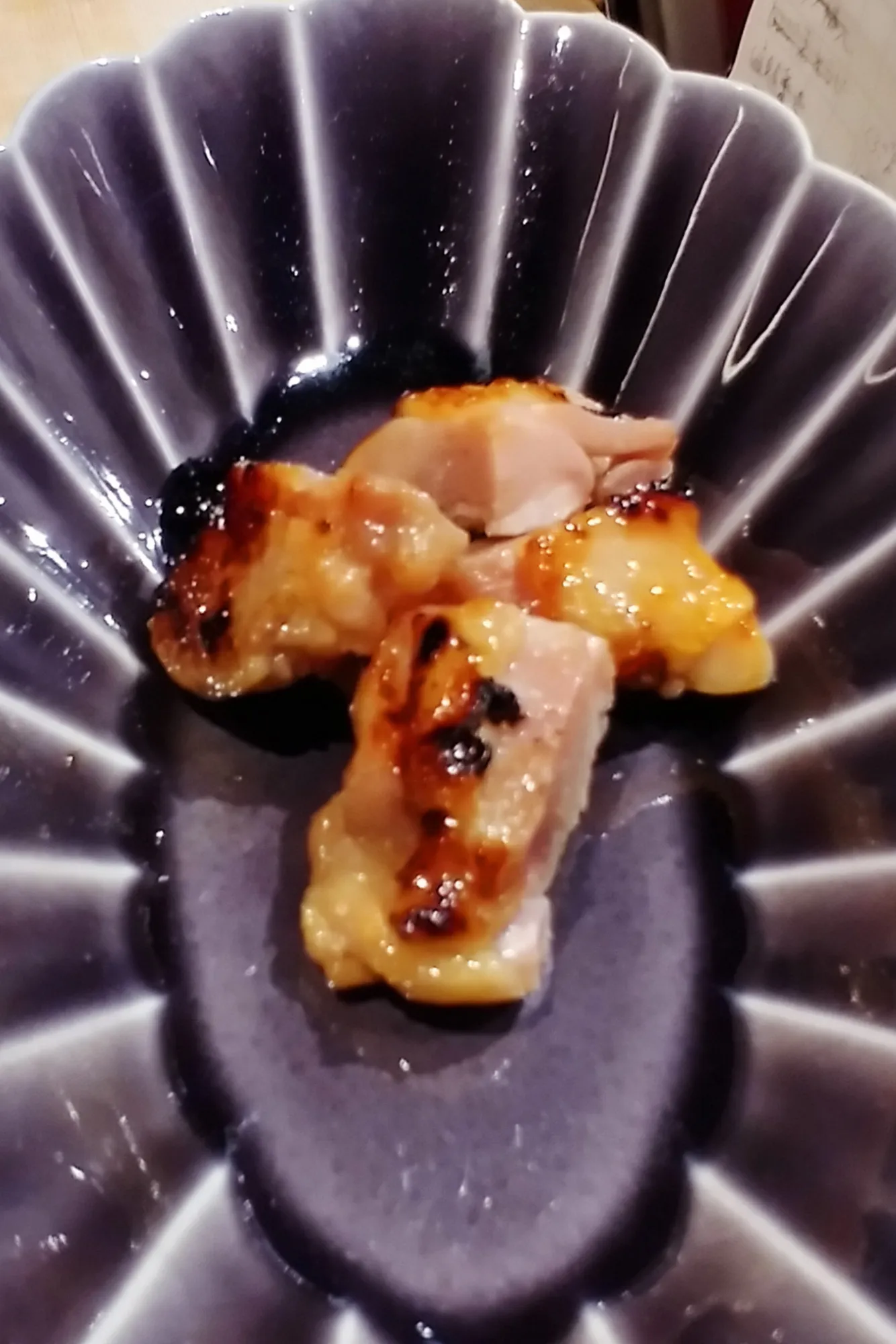
Another grilled dish is ‘saikyoyaki’ (grilled fish marinated in miso). A key to successfully grilling miso-marinated fish is to pay close attention to the heat temperature so that the fish will not get burnt. They can use chicken instead of fish too.



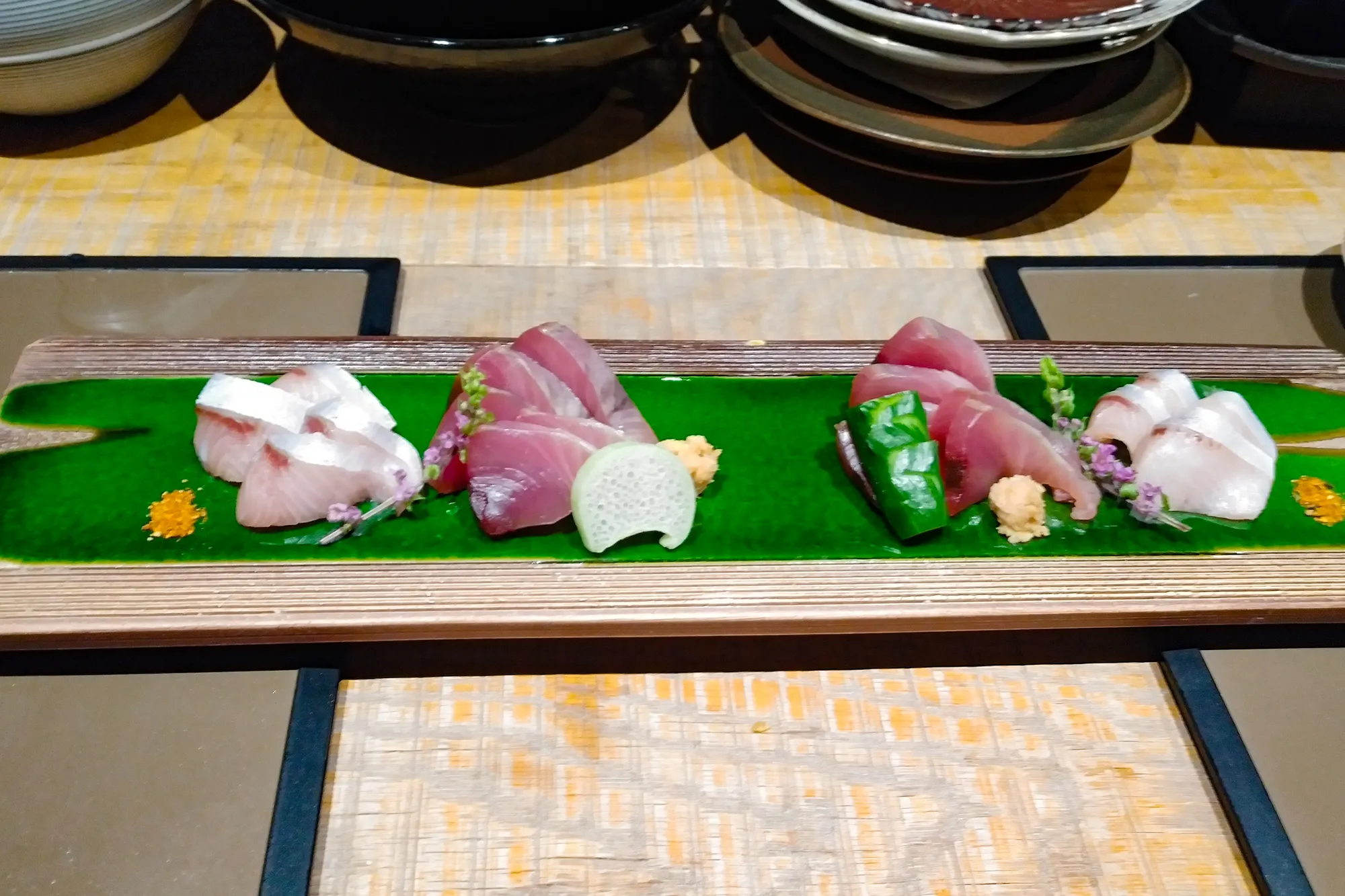
Next is ‘sashimi.’ They learn from Instructor Matsumaru not only knife skills to slice sashimi beautifully and presentation skills, but also some basic rules to follow when arranging ‘sashimi’ on a plate and serving it to a customer, all of which are based on traditional Japanese food culture. We hope that the students not only master skills but also gain a deeper understanding of Japanese culture.
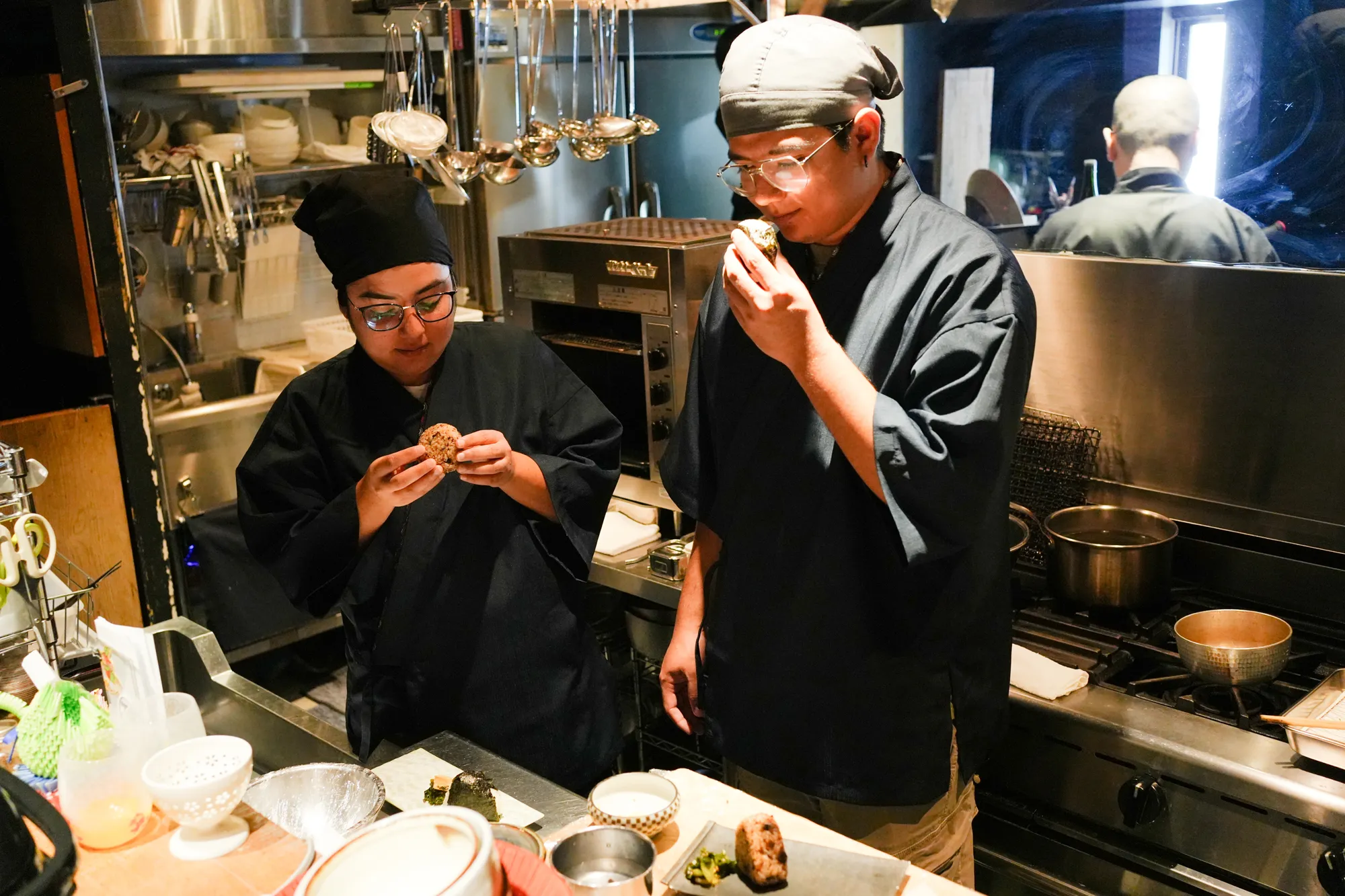
Day 4 covers Japanese dishes using rice. To begin with, they practice making ‘onigiri’ (rice balls). ‘Onigiri’ is also becoming increasingly popular overseas. Sam & Miguel mention that they often buy ‘onigiri’ at convenience stores in Japan, but find it quite challenging to shape them into perfect triangles. They can fill their ‘onigiri’ with any ingredients they like.
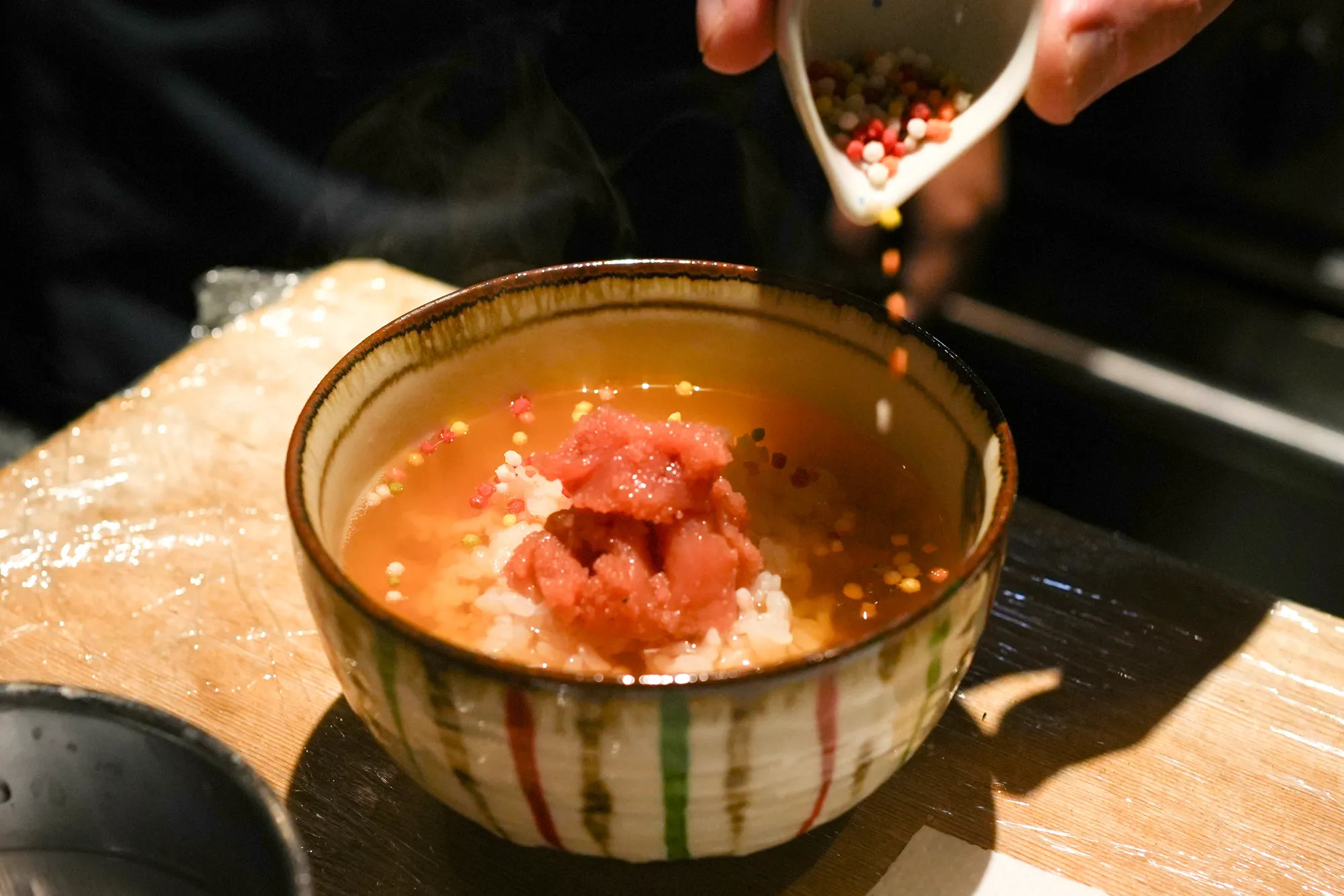
Another rice-based dish is ‘ochazuke’ (boiled rice soaked with green tea or hot water). Here, they learn to pour a soup made from ‘dashi,’ Japanese sake, salt, and light-colored soy sauce over rice topped with ‘mentaiko’ (salted cod roe spiced with red pepper). The students also enjoy this popular quick meal.
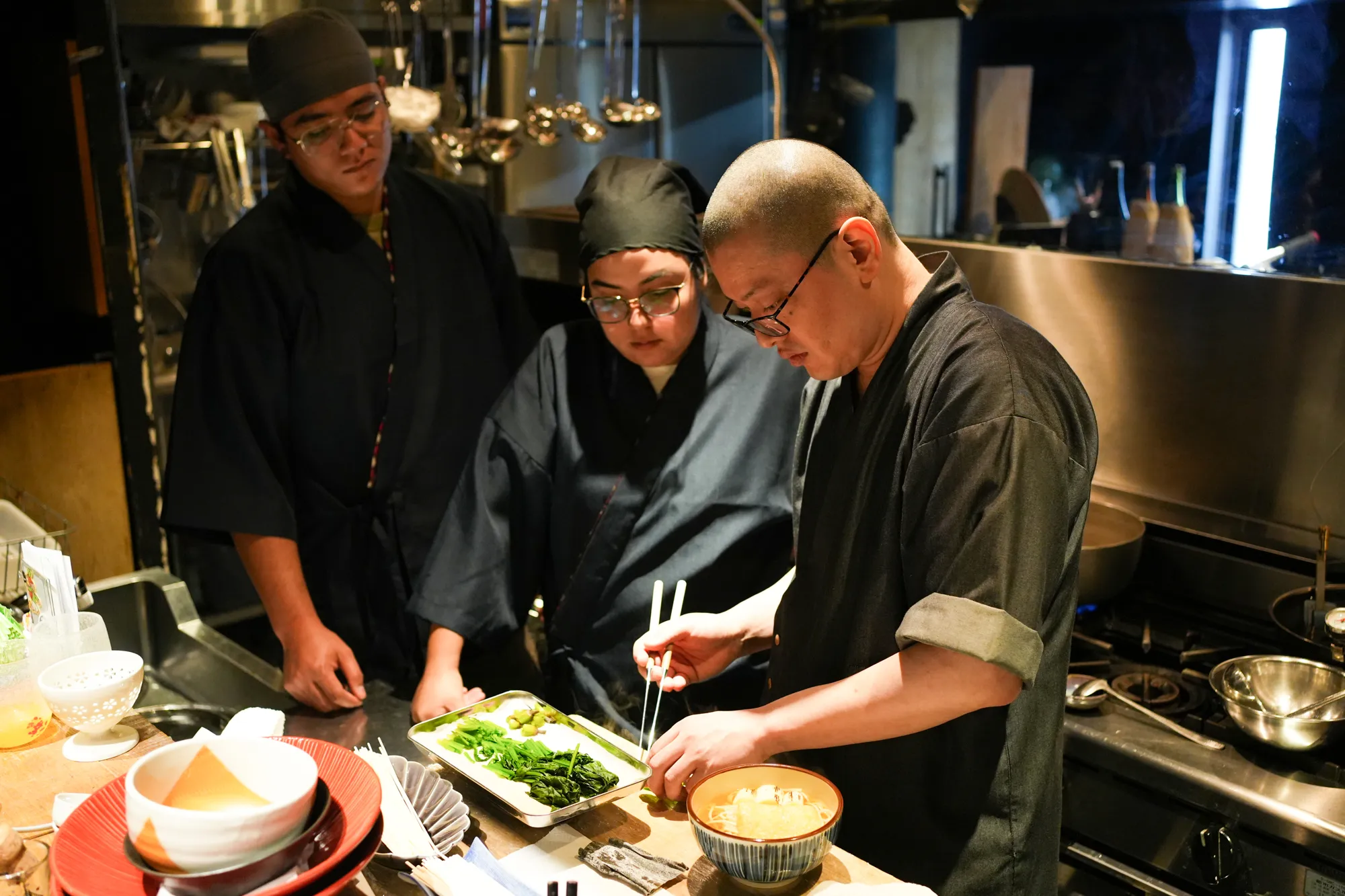
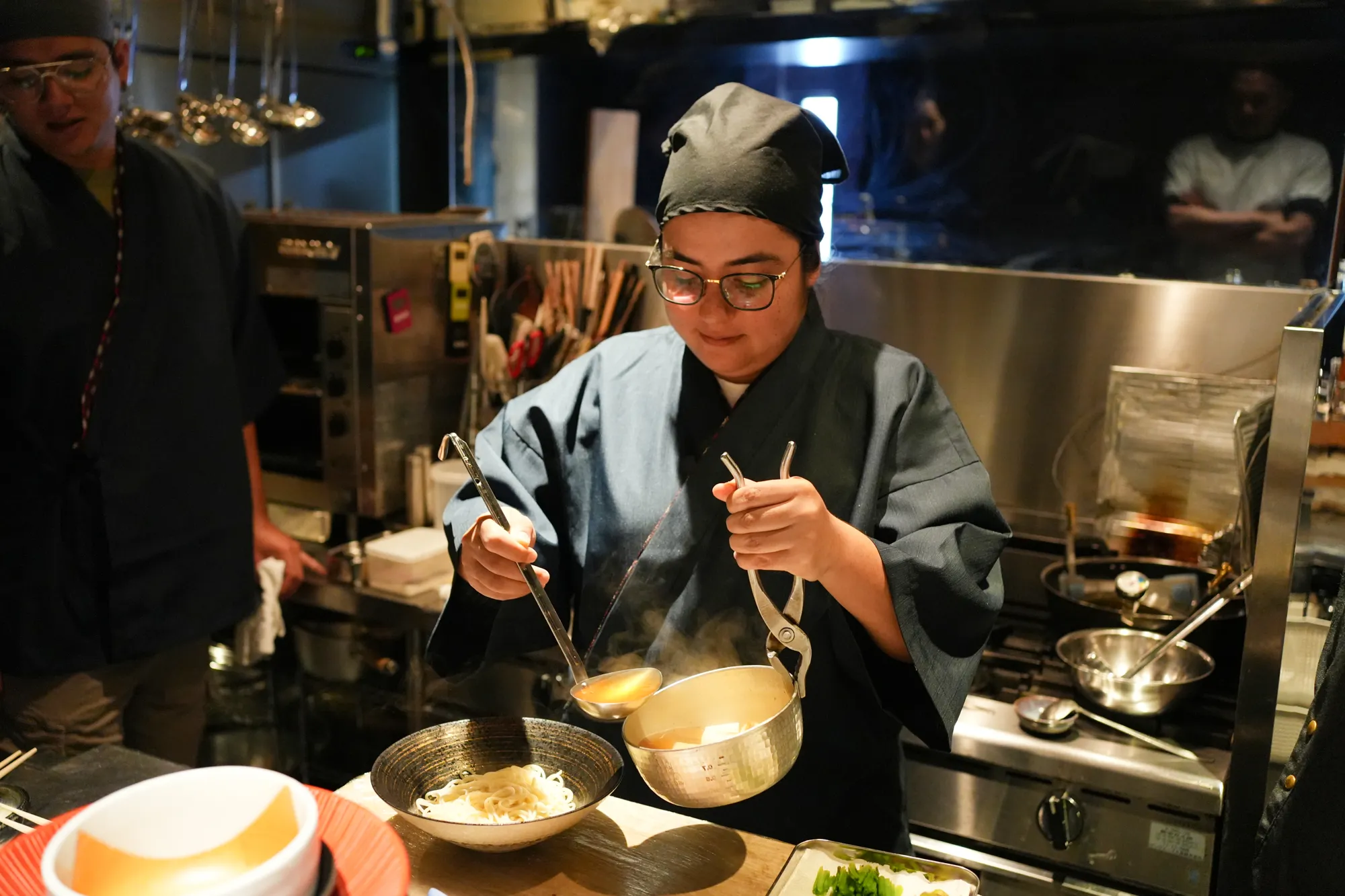
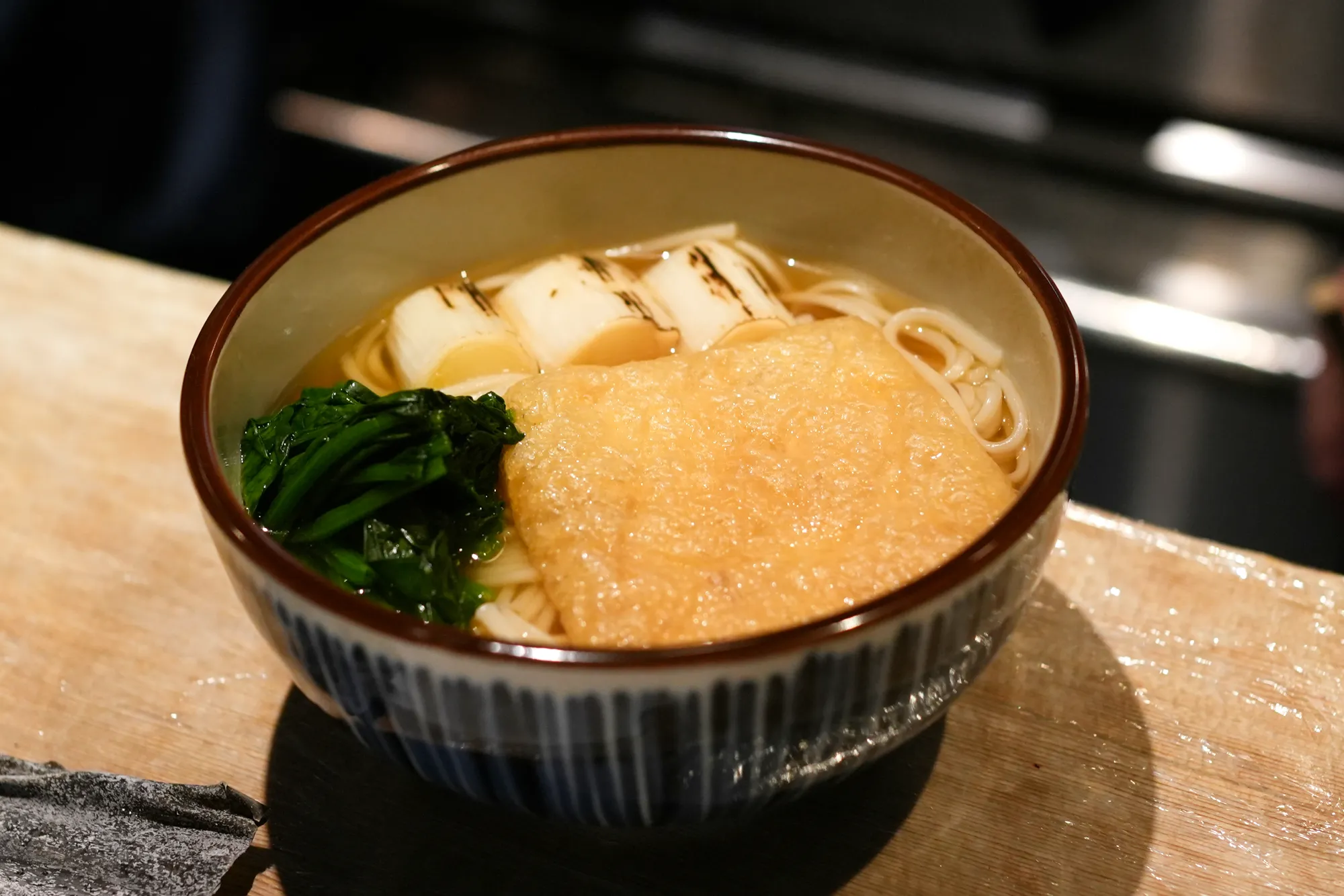
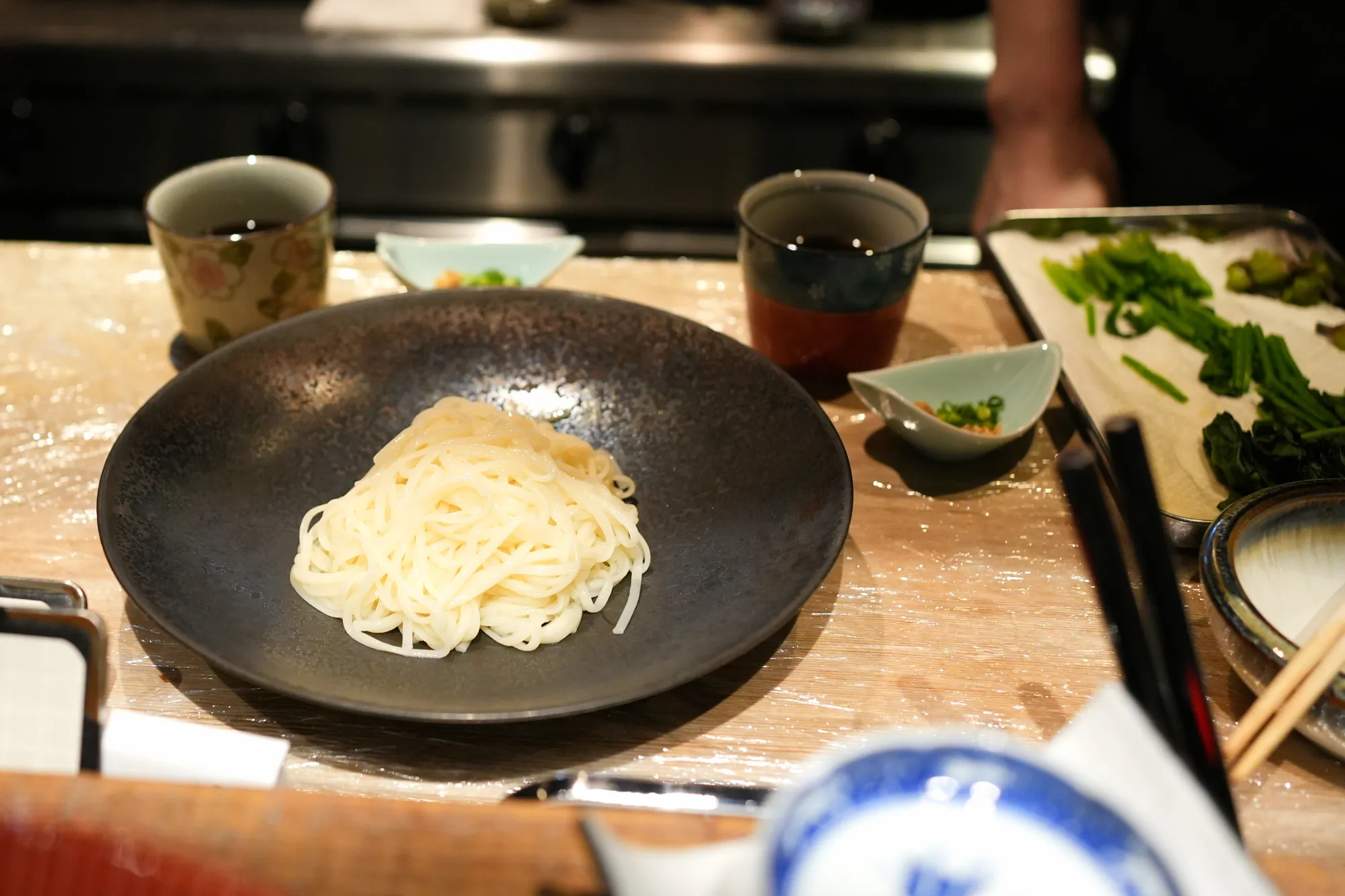
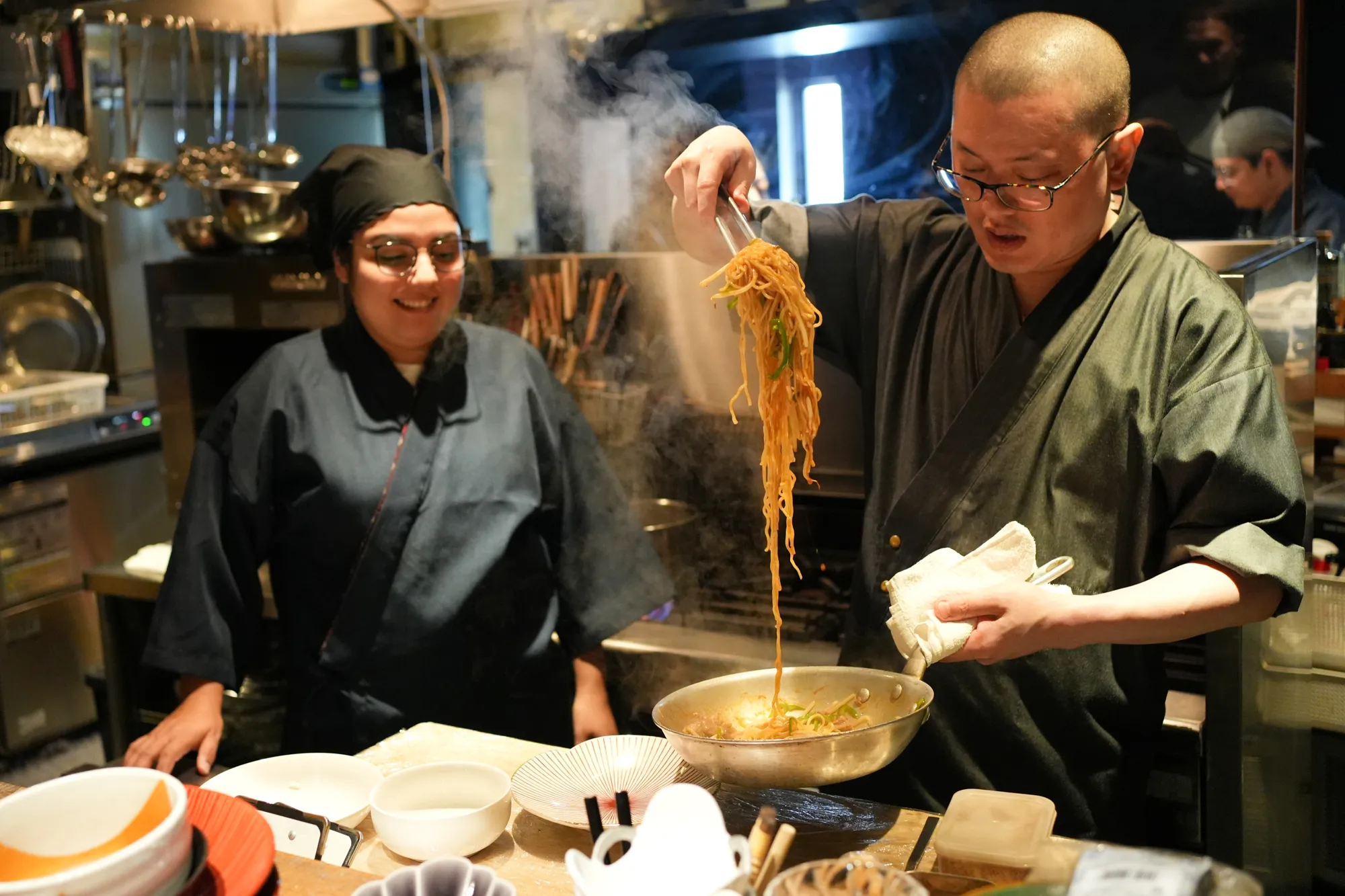
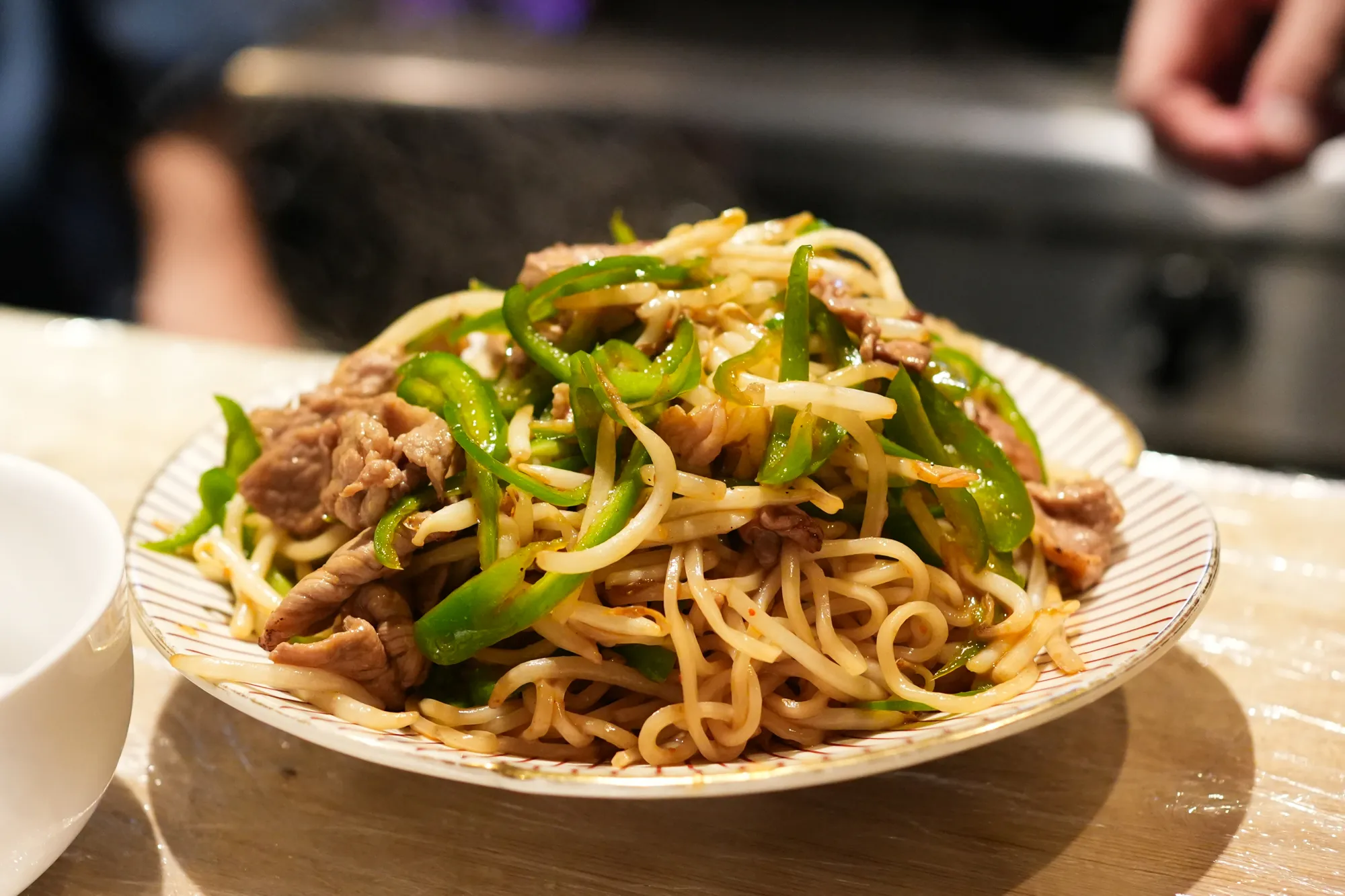
The next topic covers popular Japanese dishes using noodles such as ‘udon’ and Instructor Matsumaru’s signature ‘yakisoba’ (fried noodles). The ‘dashi’ they have made can also be used for a soup base for ‘udon.’ While the students learned about ramen the previous week, they can now explore a wider variety of noodle dishes in the Izakaya Course.

In the Izakaya Course, there is an opportunity to attend the lecture Instructor Yuki provides on food pairing with Japanese sake. Japanese sake is broadly classified into 3 types based on the percentage of rice-grain weight remaining after milling: ‘junmai’ (sake made from only rice and yeast), ‘junmai ginjo’ (sake with no added alcohol, with rice grains polished at least 60% of their original size), and ‘junmai daiginjo’ (sake with no added alcohol, with rice grains polished at least 50% of their original size). They also learn which type of sake pairs best with Japanese cuisine.
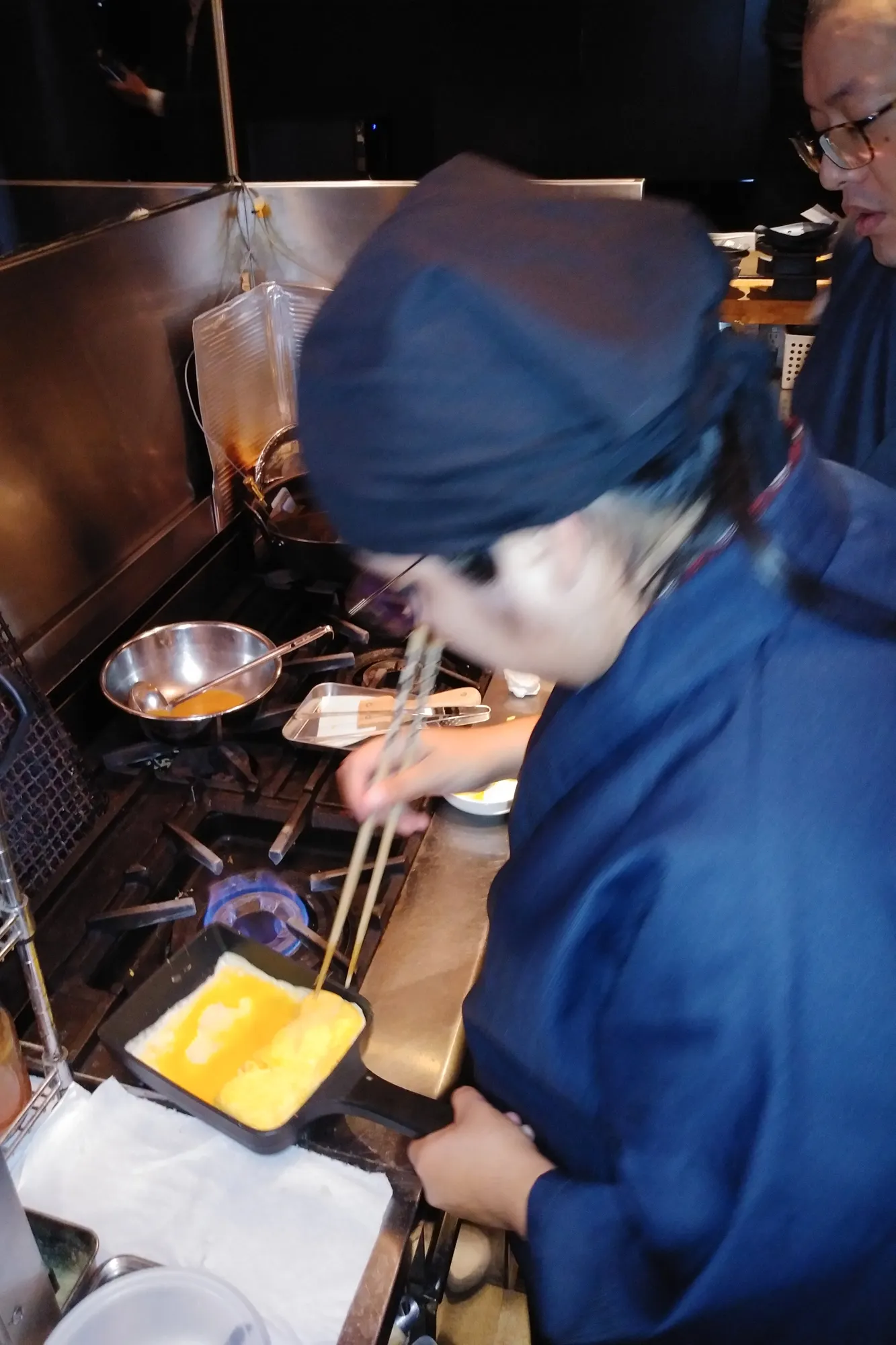
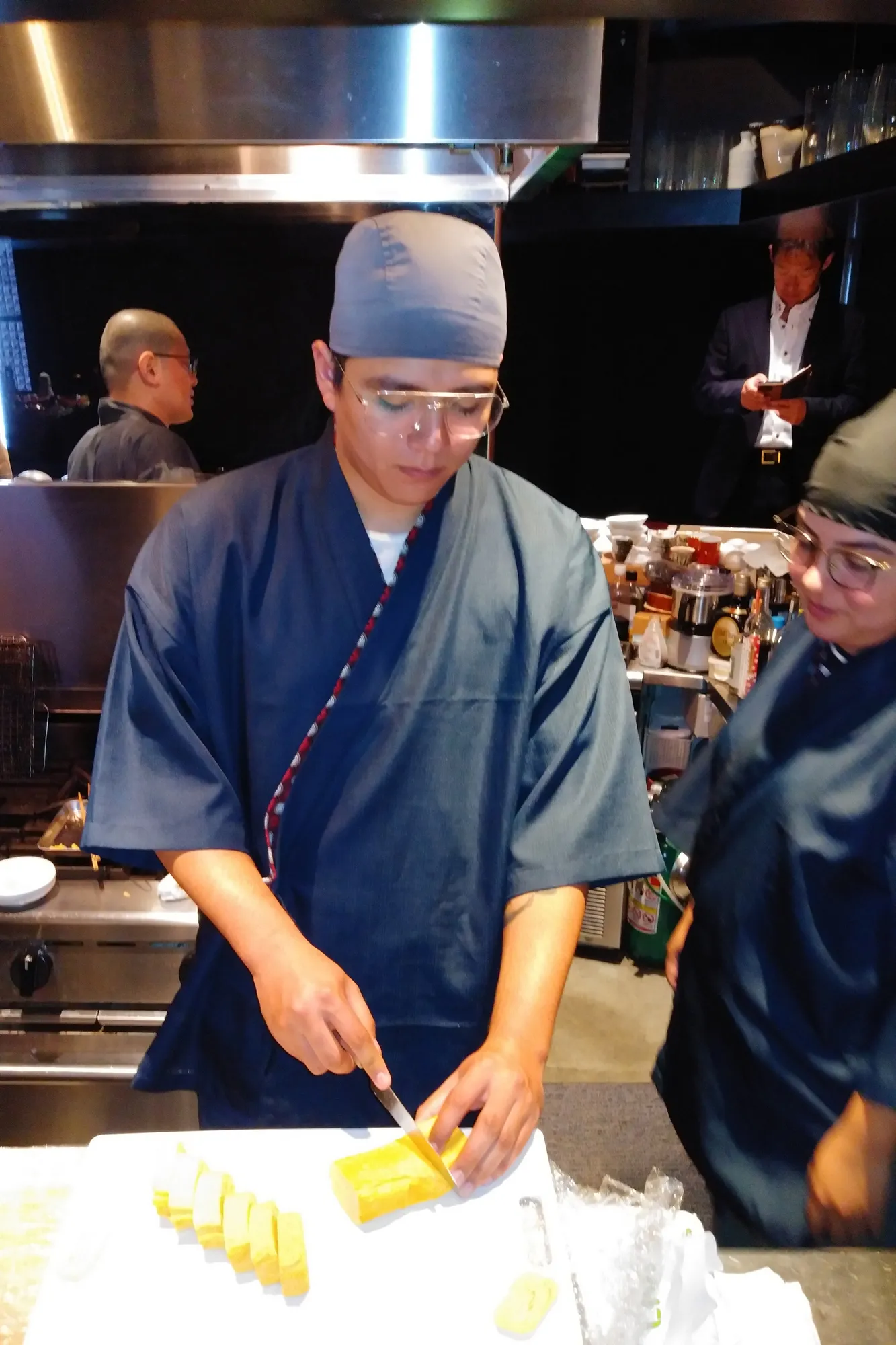
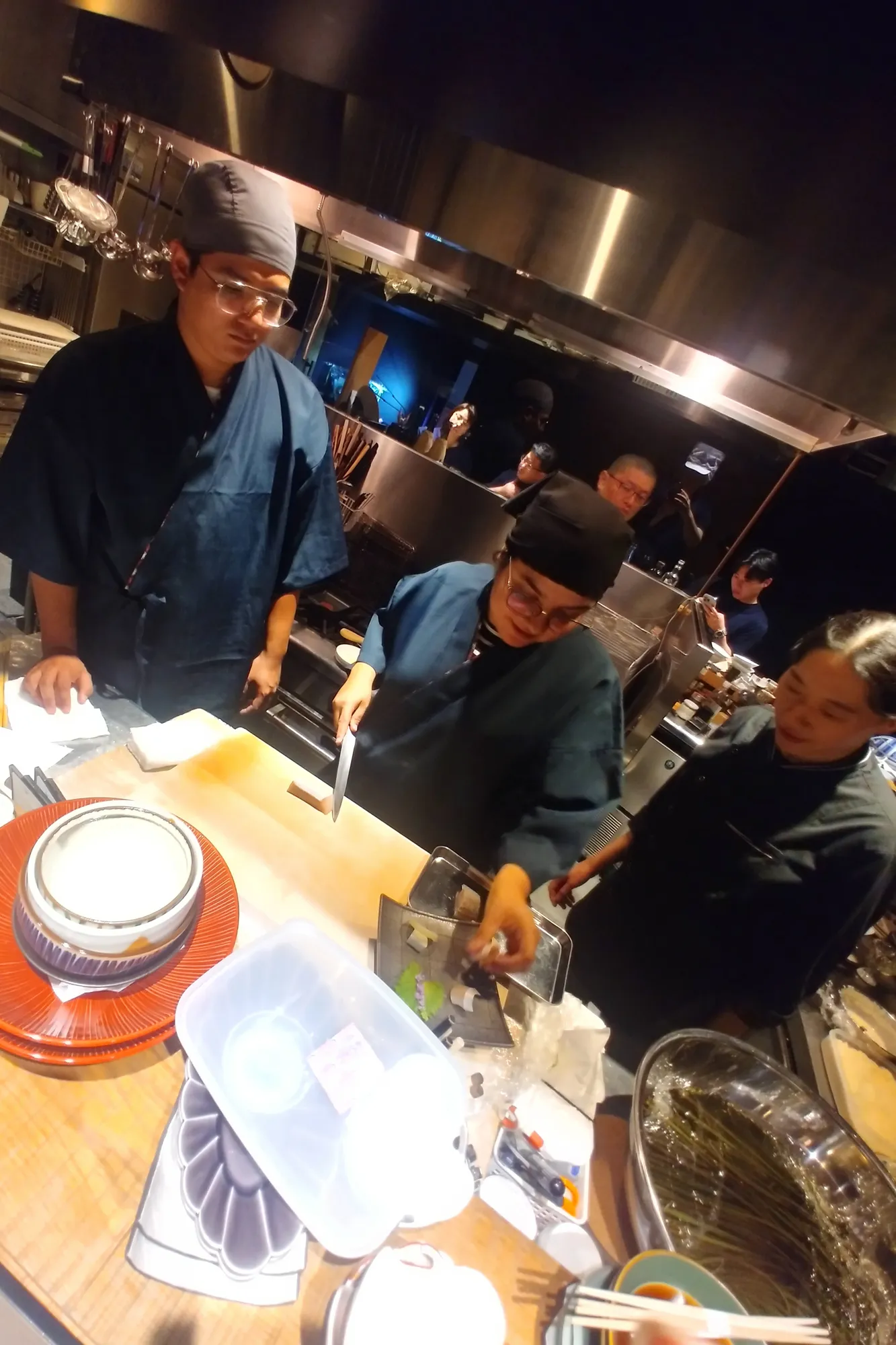
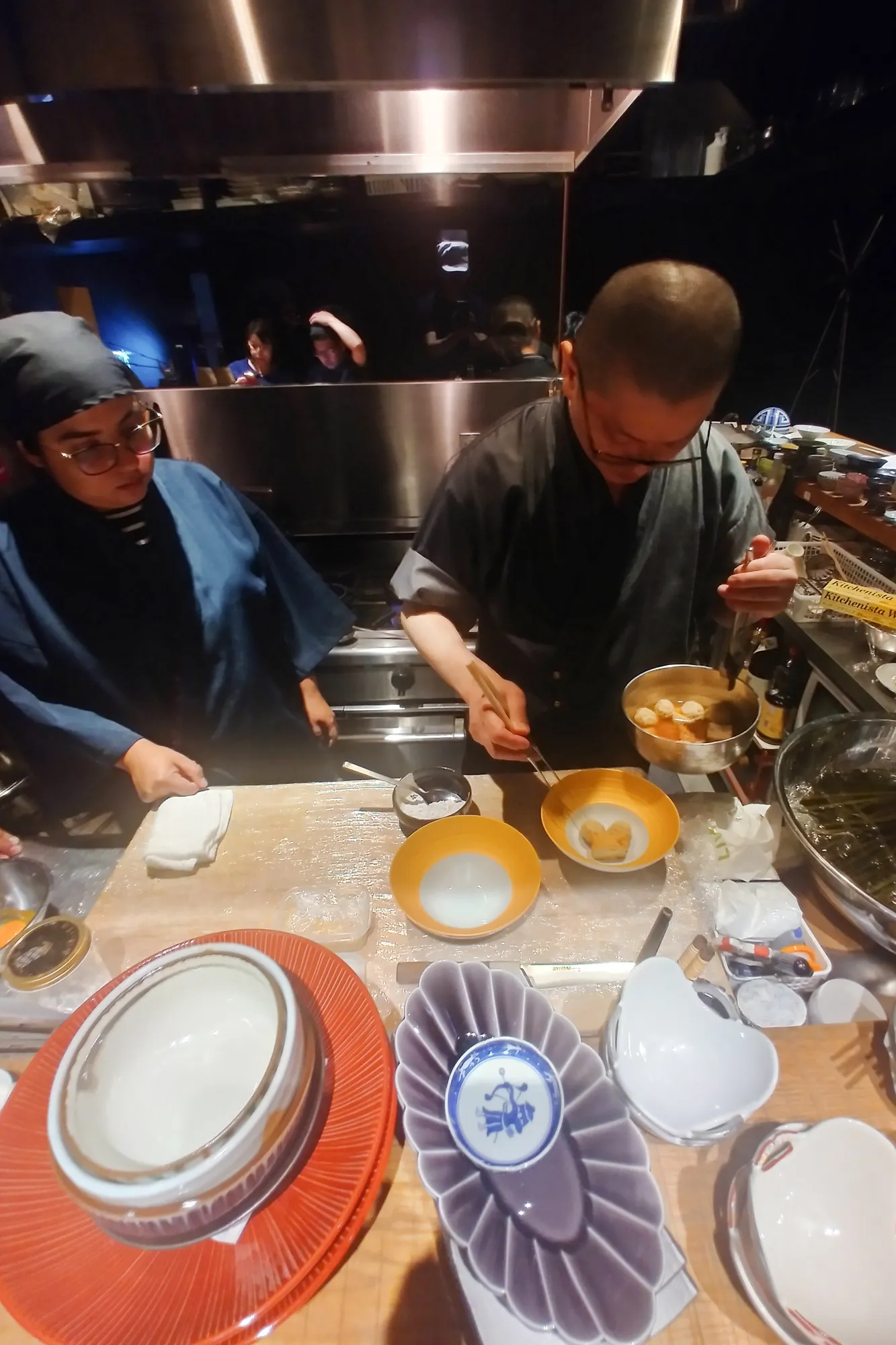
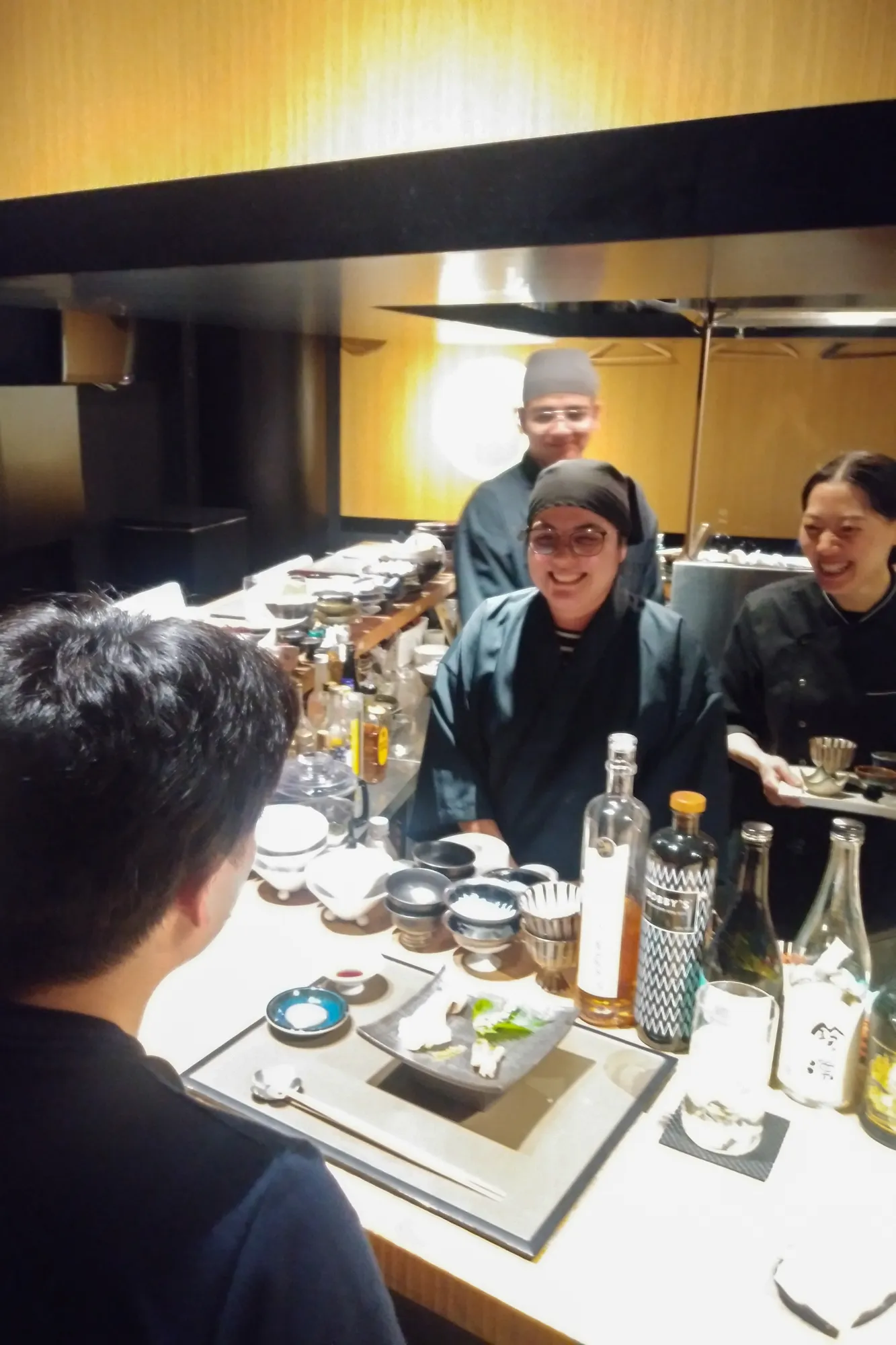
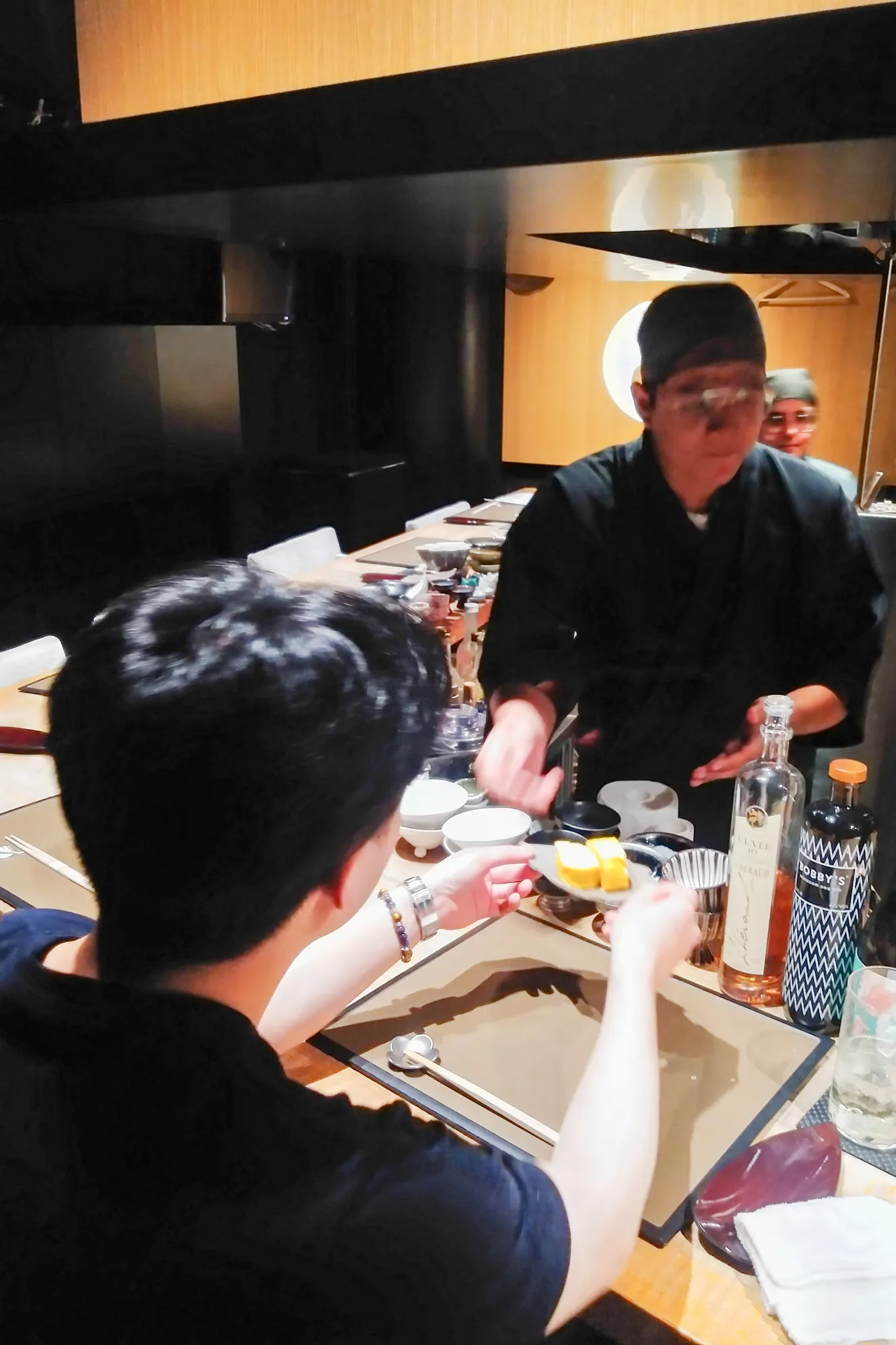
The goal of the final day is to serve a multicourse meal to a regular customer with the assistance of the instructors. These are the menus that they are tasked with: ‘tempura,’ ‘sashimi,’ ‘tskune’ simmered with a bamboo shoot and fried tofu, Japanese-style rolled egg flavored with ‘dashi,’ ‘katsuni’ (deep-fried breaded pork cutlet simmered with seasonal vegetables in seasonings), and cold udon. They appear a little nervous, but once they start serving, they do their best to showcase what they have learned during this 1-Week Course. They successfully serve all the planned dishes to the customer with help and advice from the instructors, and he also admires them for their hard work. They look so happy to have accomplished their task!
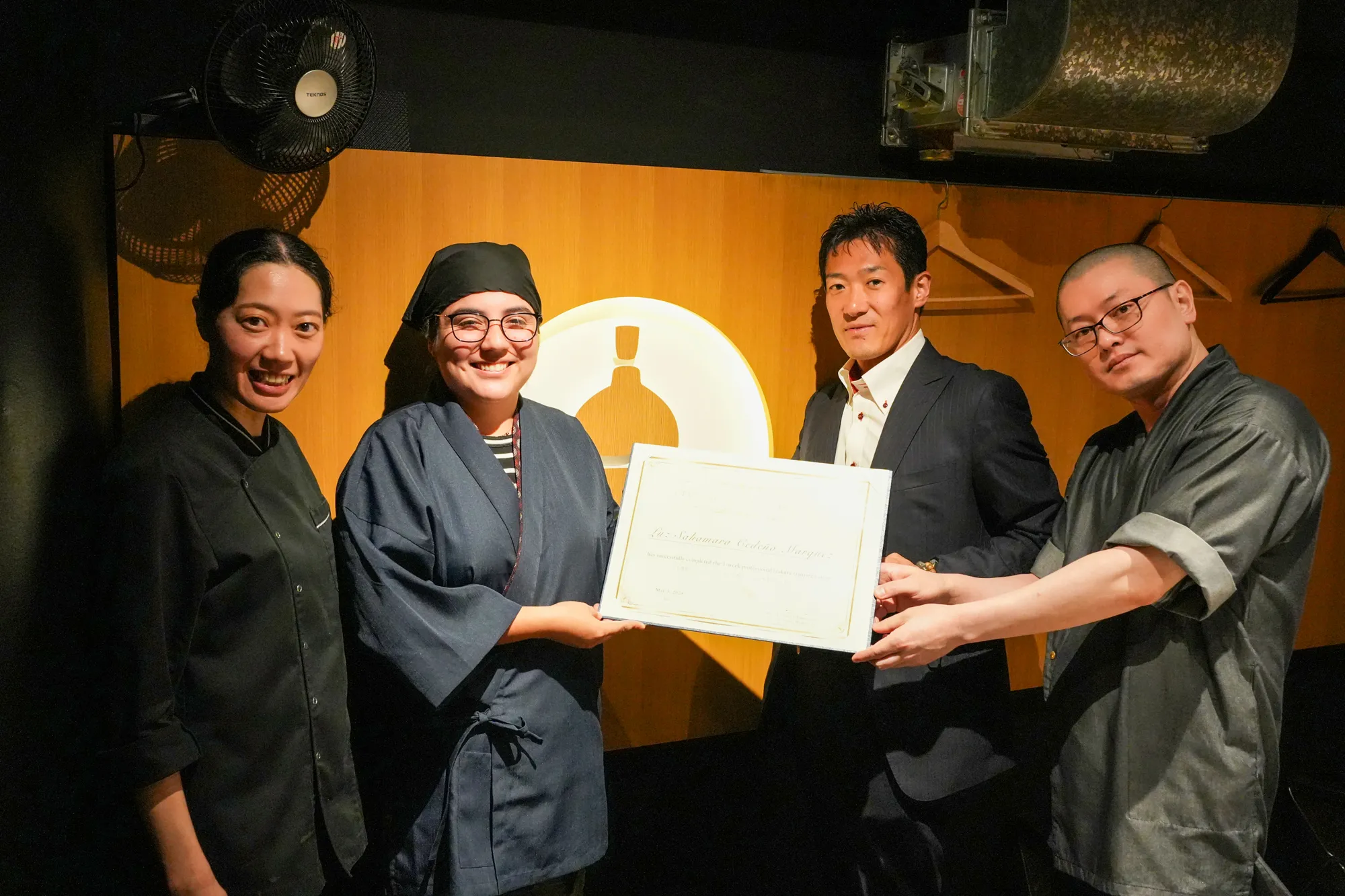
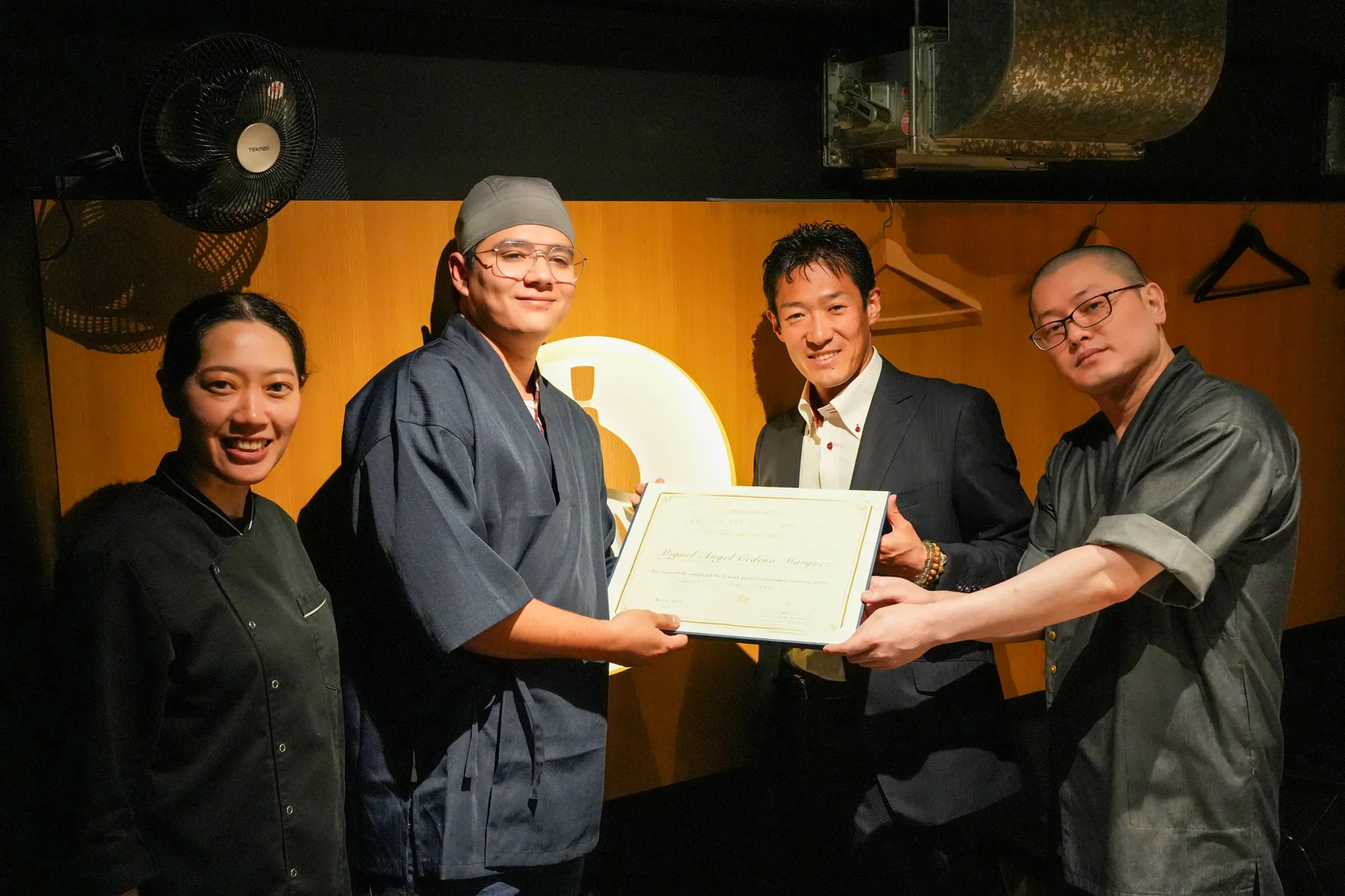

That concludes the 1-Week Izakaya Course and the 3-Week Course for Sam & Miguel. What impresses us the most is that Sam finally manages to bring her Japanese-style rolled egg to perfection! Throughout these 3 weeks, every time they encounter challenging tasks, they eagerly practice and eventually overcome them. We truly respect their enthusiasm and great effort. All the instructors and staff of FZWC wish them great success and prosperity in their new restaurant. Now, we have a new dream of visiting Mexico and enjoying dinner at their restaurant in the near future. See you later, Sam and Miguel!
